#about the state of the network in the past mostly - some of it is functional and most of it is not until Zodiac works on it in 3
Explore tagged Tumblr posts
Text
Whenever it becomes convenient to me (when im.not being beaten violently by school throughout the rest of this month and simultaneously trying to keep up with every stage of the comic process at almost the same time etc) I will go back once again to edit some outstandingly bad cramped text spacing in previous chapters (focusing on chapter 2, I didn't look at earlier ones tonight but I'm sure they're similar) and revising various dialogue/probably some visual details to fix confusing inconsistencies. It's amazing that I can get away with a thing like this and a moment I am glad to have a very small audience. My awful awful improvised writing process lives to see another day
#text tag#about the state of the network in the past mostly - some of it is functional and most of it is not until Zodiac works on it in 3#but the lights which are the sole mentioned output in this chapter are almost always shown as working and this is not commented upon i think#I forgot.#*sole mentioned output of the network.it controls other things#it's all going to be rather awkward either way! because i couldnt strike a good early balance between infodumping in-world mechanics#and not doing that. self conscious anxieties making everything feel diluted and hesitant once again. oh well
0 notes
Text
I get that your favorite pet site being DDOS'd is stressful, but some of you need to take off your tinfoil hats about the DDOS thing. DDOSing is an incredibly common internet occurrence. One time a rabbit care forum I was on was overwhelmed for over a week solid, for some reason, and then it just went away. All that happens is you can't access the site if the protection service is lousy or the webmaster decides to shut service off to wait out the weirdos. It's dirt cheap to run a service-denial attack. People do it for fun. There is absolutely NO proof that those people who claimed credit for the AO3 attack were the ones actually behind it. There is NO proof they are the ones flooding FR. DDOSing is a crime and any sane person isn't going to admit to it in public. There is even less evidence supporting the theory that it's a state sponsored extortion attack targeting niche pet sites comprised mostly of minors with no personal income. I cannot emphasize enough that these sorts of attacks are extremely commonplace on the internet, and just because nearly all major social networking/streaming is owned by the same mega-corporation who can afford absurd levels of ddos mitigation doesn't mean it doesn't happen.
If you don't' believe me please feel free to research it yourself before getting panicked over FR getting DDOS'd. Technically the userbase has accidentally DDOS'd it offline several times in the past during big releases lol. It's just a petty thing that weirdos on the internet do to try and disrupt service, it can get expensive depending on how dedicated said weirdo is, but it's not going to bug out the servers to the point they'll be unusable and user data will be wiped (unless they're already barely functional, but that's another issue). It literally just prevents people from accessing the site by overloading traffic. Like trying to fit too many people through a doorway. Seems like the attacks are over already anyway. Frankly with how popular FR is I'm surprised it didn't happen sooner lol. If you see the numbers spiking again just take a breath and relax, it's just a waiting game! Inconvenient, but nothing that will kill the site.
30 notes
·
View notes
Text
Hello, back again another fic promo post!
It just took breaking a Dancy Pants machine, elemental merging and stopping the apocalypse for the nth time. Are all engagements this eventful? or, Diversity win! Nya gets a serving of the trauma salad. Cole is surprisingly experienced in the particular field.
This one is vaguely a sequel to four truths of the disembodied, if you've ever read that one! It took me a while to get around to posting this one on Tumblr bc I have some things I wanted to say about it.
Author's notes below the cut!
One very common Nya take I've seen in my year of fandom experience is that Nya still has the facial markings from her time as the Endless Sea, usually blue or glowing blue at some point, or that her hair is still water or turns into water when she uses her powers.
Those headcanons and fanart are really cool, I have to admit they lend themselves to excellent visuals, but the mechanics of them (as well as the mechanics of [shudders] Crystallized in general) always bugged me just enough to keep me thinking.
Let's start with Crystallized. To defeat Wojira, Nya merged with the ocean, opened herself up completely to her powers. In order to bring her back, they had to take her powers away, but they did so in a way that we already know (from Kai's experience) is not permanent. So, she does, and awfully quickly, get her powers back.
But wait. Isn't that separation from her powers is what brought her back to life to begin with? I like to give the show the benefit of the doubt, but still... Crystallized writing, amiright?
So anyway. I'm all for, after such a sudden burst of power being essentially fixed with some duct-tape and hardy faith, Nya having some kind of permanent mark and consequence from it all. It's just that, I think the situation was too dire and too powerfully magical for the consequence to only be a change in design. I need the functionality of her powers to be affected too, or, as I present in this fic, for her power to affect and represent her mental state in an actually risky way.
This isn't a jab at anyone who does otherwise, neither is this supposed to say no one has ever done this, I just really liked my concept and needed to ramble a little about it.
The other thing is: We have a lot of fics about Ninjago characters dealing with trauma from past seasons, and especially, a lot of fics about Jay dealing with Skybound trauma. Sometimes supported by Nya, or Cole, to deal with it. And I do love me some angst.
But while there seems to be a general, vague acknowledgement of how Nya died in a wedding gown, so I see Jaya art that banks on her not wearing a wedding gown if she gets married, but still... I feel like Nya's Skybound trauma is under-explored sometimes, especially compared to Jay's. And she went through a lot that season.
She was ignored, dehumanized, reduced to a face, forced into an outfit she didn't want, had to play into that role to appease to her kidnapper, forced to marry someone creepy, got possessed, used as a human shield and then died.
So yea. I don't think she's like. Fully Okay and Healthy about all that.
Sure, having a cool, strong woman character is fun, but a woman feeling hurt and needing a support network and showing any of the traits women have been associated with and shamed for throughout history shouldn't reduce how seriously she deserves to be taken.
I think we mostly get the idea! We're on a pretty smart website full of pretty smart writers and artists. But there might be someone in the fandom who hasn't yet, so I'm putting this out there anyway.
Thank you if you stuck around this far on this blatant ramble post, and I hope you liked the fic!
#ninjago#ninjago seabound#ninjago nya#ninjago cole#ninjago tsunamiduo#my fic#ninjago fanfiction#ris rambles
6 notes
·
View notes
Text
Ooze
There are two types of mutagen in OOTC. One primary, one secondary.
Primary mutagen is a byproduct of Utrom atmosphere converters in the TCRI building— the Utroms have protocol to contain it so it doesn't contaminate their temporary home planet, but some of the machines were faulty and the Utroms were unaware— partially to do with the workers at the facility, and Bishop's external bribery to keep it hush hush.
The way primary mutagen mutates organisms is that it enhances/increases the self-awareness and intelligence of any organism with or without a nervous system, as well as anthropomorphising them and giving most the ability to speak. If a human were to come into contact with it, they would gain high intelligence but mostly keep their physical state with slight alterations that are easily overlooked.
Secondary mutagen is a highly reactive substance synthesised by Agent Bishop and Dr Baxter Stockman, who were previously capitalising off of the outflow of primary mutagen by using it as the main power source for their laboratory/office building.
After the Utroms fixed their atmosphere converters' mutagen disposal unit, Stockman and Bishop decided to synthesise their own chemical compound that manages to generate enough energy to sustain the high-energy work they do in Stockgen and the EPF. This is the secondary mutagen.
How it mutates organisms is by fusing the DNA of any organism with DNA into one— essentially creating amalgamations of species. If the mutated person has an obvious larger abundance of DNA of a certain animal, they will instead take on that form. However they will still retain their human-like cognition.
How it reacts to organisms mutated from primary ooze is very different— it reverses the mutation, essentially acting as a form of retro-mutagen which has slow-acting, but permanent consequences.
Examples of people from primary ooze would be Seymour Guts, who started out as a network of prototype organic nanobots which somehow ended up in the ocean, being bathed with ocean water contaminating the stuff. The nanobots gained an ability to coordinate extra well, forming a fully functioning organism with its circulatory system consisting of mutagen, hence the Mutagen Man. Because his cells are Nanobots Premium, Seymour is very fragile and needs extra care or he'll be splayed back into a network of organic bots.
The kidnapped children on D'Hoonib were exposed to mutagen because Krang got impatient when he realised that their intelligence level had not reached the point where they were able to conceptualise the Utroms' scientific theorems. With an enhanced intelligence they were able to be about as intelligent as the average Utrom at their point in lifespan, therefore made it easier for Krang to tell them about important concepts yet-to-be-discovered by humanity.
The Mutagen Bomb using secondary mutagen mutated many humans and changed their lives forever, including Jennika and one other Mona Lisa who was, at the time, babysat by April for the past 3 days and hence mutated into a human-salamander hybrid.
5 notes
·
View notes
Text
Here are Some Main Reasons Behind the Increasing Global Fame of Men's Fine Tailored Watches
“Custom watches for men offer personalized timepieces tailored to individual styles, preferences, and needs. From unique designs to engravings, these watches combine craftsmanship and functionality, making them perfect for self-expression or as meaningful gifts.”
Custom watches for men have been booming not only in the United States but around the world over the past few years. What was once a mark of an exclusive society of people and high-end collecting is now mostly a matter of personal individuality and art. Custom watches, which were once functional devices, now only for masculine adornment, have transformed personal style expression into a strong differentiation statement. Many elements contribute to this proliferation of custom watches for men—including newer dimensions in designs through technology, the increasing tendency for personal expression, and the boom of a watch culture on social media.
Personalisation and Uniqueness: The Need for Individual Expression
Personalised to your Sensitivity and Needs
Perhaps one of the most persuasive reasons as to what compels people to want Custom-Made Watches is that a few of those accessories match with the unique taste of an individual. And with custom timepieces, one can choose every detail, including watch face design and type of material, to straps and engravings, as off-the-shelf watches can't provide this personal touch.
Beyond Timekeeping: Identity Statement
A customized watch is no longer a utility device; it has come to reflect personality and accomplishment. With people growing closer to individualism, men always looked upon wristwatches as statements of identity.

2. Advancements in Watch Manufacturing Technology
Accuracy and Sophisticated High Detail Affordable Quality End
This all advances technologies and materials, thus enabling customization watches at the most affordable rates, making the luxury wristwatch available to more men who can afford and customize their watches for themselves.
Online Customization Platforms
Then another source of boom for bespoke watches is the increasing popularity of websites dedicated to custom watch construction. Major brand houses have built user-friendly platforms or apps for their clients to design their very own watches by customizing the dial, hands, body material, and strap.
3. Through the Culture of Wearing Watches and Social Media
Social Media and Increasing Influences
Besides that, it has also brought about an increase in the popularity of custom watches. Some see and post cool pictures of their custom timepieces on social media platforms, building a truly international community of enthusiasts.
Growing Community of Watch Enthusiasts
Aside from this huge interest in social media, watch culture has attracted the unsuspecting younger generation. These are the generations that will make horology an art and science subject become a hobby, as many men will be taking it up, thus increasing the market for custom timepieces.

Conclusion
There are innumerable reasons for the acceptance of customized watches for men on a global basis, from a desire to wear unique styles to technological innovations in making watches to influence from social networks into the world of watch interest. As they seek to express their individuality via accessories, custom watches have become a very unique means by which these men can express individuality and appreciate the art of watch-making. Custom Watches for Men offer that, with customization options more accessible than ever, it is no surprise that the trend in personalised timepieces is only set to grow. Whether it's for self-expression, quality craftsmanship, or status, the way times are measured and worn will be reshaping.
0 notes
Note
also:
cultivate your obsessions. adore them. dote on them. write about them
read!!!!!!!!!!!!!!! read everything read as much read little poems all the time <3 you need to be eating words if youre going to give them away. writing is a mass balance problem
keep a tiny notebook that u carry everywhere and fill it with observations, especially about anything that catches your attention! fill it in the spirit of marie howe's glass of water, but also in the spirit of elaboration and association and poeisis or whatever you want..render it incomrephensble, play with it, change something about its reality. then you can go back through the notebook later and shake its contents around on a new page
journal but let it go off track; take your life-sized, you-sized topic that was easier to think of and widen or narrow it into something tinier and more immediate or something huge and forever
transform what you already do into writing... in high school i mostly wrote when i was writing papers for class and I would get too passionate and get extremely tangential untilI I found myself in the middle of some sort of prose poem monster and so before deleting it and finshig the essay id paste it into its own document and keep adding to it. lately after my dance rehearsals i write down the choreography in abstract ways, it becomes a writing prompt. i used to write in the margins of my bio textbook...whatever inspires you, iterate off it
take really long baths and once your thoughts become obsessed start recording them... in general i think what i do is become a transcriber of myself....sort of just let yourself steep in language and then practice recording what is happening in your head, or different ways of paying attention to your thoughts. what's the furthest away sound that you can hear right now? how far away is it? or sensation or thing you can see? sometimes i think its about getting away from the daily thought pattern of planning, executive function, future-thinking, etc, and just letting there be room in your head for other things. if you are very busy and juggling a lot, that mental energy can block you from looking for shapes in the quiet goo that is always writhing underneath yourself
#unemployment
or something close to unemployment like a workaway or wwoofing or something. maybe you want to get ourself out of the psychogeography of the post-industrial landscape. or whatever. during the pandemic i would spend like 6 hours a day writing poems and then walking around fainting because id forget to even drink water. it was awesome
the point of all this is that the default mode network aka the "resting" state of consciousness when your mind is just wandering is also connected to creativity. so making time in day to just sit in a peaceful place-- putting a high value on doing nothing, i think, is sooo important or at least its really good for me
none of this may be true for you this is just how i tend to write
do other creative things ! and dont put too much pressure on yourself
any tips for someone who wants to start writing but doesn’t know how or about what??
“I want you to do this with me for one month. One month. Write 10 observations a week and by the end of four weeks, you will have an answer. Because when someone writes about the rustic gutter and the water pouring through it onto the muddy grass, the real pours into the room. And it’s thrilling. We’re all enlivened by it. We don’t have to find more than the rustic gutter and the muddy grass and the pouring cold water.” -- Mary Karr
"Just tell me what you saw this morning like in two lines. I saw a water glass on a brown tablecloth, and the light came through it in three places. No metaphor. And to resist metaphor is very difficult because you have to actually endure the thing itself, which hurts us for some reason. -- Marie Howe
812 notes
·
View notes
Note
If MJ and Peter’s roles were switched in NWH (as in MJ as the superhero and Peter was the SO), do you think MJ would have made the same choice not to tell Peter and Ned after seeing how happy they were?
anon i love this question, but before i give you my Thoughts on MJ, i'm going to have to pivot into a discussion of what constitutes character growth for a moment. this is gonna be pretty long, but i am assuming by asking me this question, you knew what you were getting into.
there's a modern sensibility, at least on the internet, that character growth or character development means the character becomes a better person in some way. they make better choices, they become smarter or stronger, they develop a better sense of morality or ethics, they become more mentally healthy, etc. and this idea is wrong. character growth/development just means that the character changes. that's it. it's entirely neutral as to the actual state of goodness of that character. if the character has changed over the course of a story, that is character growth. if they change in a way that is coherent to the audience and follows the internal logic of the story itself, then it's "good", or at least technically competent, character growth.
how this relates to Peter is that the Peter at the end of NWH makes some unequivocally bad decisions. his decision to break his promise and "protect" Ned & MJ by not involving himself in their lives is unethical because it denies them their agency, after he has already contributed to the non-consensual removal of their (and the rest of the world's) memories. it's also an unhealthy decision because it cuts him off from the last of his social support network, and it means that, at least for a time, he is alone in the world, and will have to struggle on his own. it's not the "right" decision from an ethical or mental health standpoint.
but it's an excellent demonstration of his character growth.
Peter throughout the Home trilogy has demonstrated that he is a largely naive and careless person. he might have good intentions, but he repeatedly handles conflicts in ways that lead to more harm being inflicted because he doesn't think about the consequences. he is not responsible with the power that has been bestowed on him. i'm not really going to comment on the strength of the writing for his character throughout the Home trilogy (because it's mostly bad), but there is a through-line of Peter making reckless decisions, facing external consequences, not internalizing the lesson, and continuing to make reckless choices. until NWH, where he finally internalizes the power & responsibility lesson because he loses May. it's finally a consequence that gets through to him and demonstrates to him the true price of irresponsible use of his power.
and we know that he has finally internalized this lesson because when he is faced with the choice to bring the last of his loved ones back into the potentially dangerous world he inhabits, he chooses not to. it's not the right decision, as discussed, but it is emblematic of the growth his character has undergone. he is dynamic, he is different from the Peter we have seen in the past, and so it is a satisfying choice from the audience's perspective (or at least for some of us). it's not the most deftly rendered character arc in the world, but it is one that follows its own internal logic and is coherent to the audience. it is meaningful for his character, consistent with the themes of the story, and it serves the narrative function of opening up future stories. it is, from a story perspective, a "good" choice if you have critical thinking skills
so, after all of that, how might we imagine MJ would behave in this scenario? for the sake of the hypothetical, let's set aside the fact that the events of the Home trilogy would inevitably have been very different if MJ was the super-hero lead, because she would make very different choices than Peter did. i'm not saying she's smarter or better than Peter, but she is more circumspect and more cautious, so her choices would be very different, and the story would likely not have gone the way it did. for the sake of argument, let's imagine however that the story events did occur in relatively the same manner, even if the specifics would be different, and for some reason MJ ends up needing Strange to do the memory spell, etc.
when i think about adapting a particular story or setting or plot around a specific character, i try to think about how the adapted elements would manifest for the specific character i am writing. how can i represent their story, their character arc, the themes that are relevant to them specifically, in this new context. so i don't ask myself "would MJ make the same choice", because i could justify the choice in any way i wanted. i'm the writer, i'm the god of this little world. i ask myself "how do i represent MJ's character arc via this choice". how do i make this choice meaningful for MJ's story.
MJ, like most characters, doesn't get a lot of depth in the MCU, but if we're being generous, she does sort of have an arc. she starts out Homecoming very standoffish, clearly masking the depth of her feelings for other people under this veneer of aloofness, keeping herself apart but still involved. FFH, she starts to come out of her shell, outright tells the audience members who need their hands held that she has difficulty getting close to people and it's just a mask, and lets Peter in. in NWH, she's mostly just the "supportive girlfriend archetype" but it is an evolution of sorts for her character because she's still more open and intimate with both Peter and Ned. again, not very well done, not super deep, she deserves better as does everyone in this franchise Jon Watts i am hunting you for sport, but it's a rough arc.
so, if we translate this arc into a scenario where MJ is the super-hero, what does it look like? maybe she starts out as an isolated hero, not accepting help when she needs it or is in over her head, because she doesn't want to let anyone get close to her. she protects herself through isolation, but also it leads to disastrous consequences from a super-heroing standpoint because no person is an island. over the course of the trilogy, maybe she learns to accept help and she self-actualizes by letting people in and building a support network. this helps her save the day, etc. NWH happens, she loses a large portion of her support network either through death or the memory spell or both, as Peter does, etc.
in this context, if we accept the premise that MJ's journey is about letting people in, this would be a very dissatisfying story, because it would represent a regression for her character. she would start out isolated, and end isolated. as audience members, we would rightly feel cheated, like nothing that occurred in the story mattered, and we would be right to feel that way. given that, i would have MJ make a different choice than Peter. i would have her reach out again, because it would be evidence of her growth. she is taking a leap of faith, trusting that the people she loves will be there for her despite overwhelming odds and the machinations of fate. from a narrative and thematic standpoint, that is much more meaningful, in the same way that Peter learning to take responsibility is meaningful. these very different choices represent very different things for these characters, but are equally satisfying for the audience.
this isn't the only way to imagine this scenario. i thought of a bunch of different ways i could have justified different choices for MJ. this is the one that i settled on for the purposes of exploring a strict 1-1 role reversal, but there are other ways to have done it. i love the infinite creative potential inherent in fanfic and what-iffery, and i love to talk these scenarios through, because i am a big nerd and because it makes me a better writer.
ultimately, every decision a character makes should be explainable in terms of their motivation and in terms of what it represents for their character. this is the essence of showing and not telling within a character-driven story. this is also my favourite aspect of writing fan-fiction, because it allows me to explore these what-ifs in interesting and creative ways.
#asks#spider-man#no way home#michelle jones#peter parker#petermj#spideychelle#meta#character analysis#thanks for the ask anon i hope you got what you were looking for
16 notes
·
View notes
Note
part 1 I have multiple alien planets, but the things is I want to to be similiar in earth as in 200 countries, 5000 ethnic groups, 6500 languages, varied climate/terrain/politics. Part of the story is still on earth and obviously as a whole, 99.9999% of stuff on earth isn't even getting used, but we know there is more and sometimes there are little hints. That is stuff we know from real life and generally doesn't need explanation. Example, a character says "We borrowed this from the Russians."
Part 2 Regardless of what is really important, what we know and doesn't need explanation is a lot because we figure readers generally understand--or they can google. Hell, there could even be lots of subtle culture references as well. Anyway, depending on the reader's knowledge, it can enhance the reader's understanding in various and subtle ways. But when I do things similiar in alien planets, it makes no sense and requires extra explanation to fill the details. So, basically useless.
Part 3 Thus it seems I'm unable to fully give the type of experience as when using earth as pretty much everything needs to be important to the story. Unless there's another way to do this so I can make my alien planets seem so much more than what's actually focused on without the needless exposition? It feels like at best I could try to mention a few things but it could never feel as vast as earth does. Perhaps maybe I just need numbers?
Reminder that if your question doesn’t fit in a single ask box, you should use /SUBMIT instead.
I have had a few questions in the past which are very similar to this one, [HERE] is about how to introduce invented elements of secondary worlds (stuff that doesn't exist in the real world but has been made up for the story), [HERE] is about how and why we might include extra details about the places that a character is visiting, [HERE] deals with establishing what a 'normal' day in an invented setting is like, and [HERE] is about ways of thinking about worldbuilding, and how much you need to know vs how much the characters know.
So it is a fairly common shortcut, in scifi writing, and scifi film writing in particular, to portray alien planets as kind of 'one thing' settings. Here is the desert planet, and there is the dessert planet, and over there is the Evil planet, and there's the cute jungle teddy bear planet moon. This can be useful if you're making a film or story where you just want the different worlds to work as shorthand for certain ideas 'shitty home world', 'the seat of democracy', 'the swamp where Yoda lives' etc.
But it is very simplistic, and obviously looking at Earth, as you've said, there's a vast array of different climates, cultures, people, languages etc. We do tend to simplify the way that we portray Earth in film and stories, as well--think about, say, Australia being largely signified by the Opera House/ Harbour Bridge, and the Outback™, or the UK being Big Ben and the houses of parliament, or the USA being a vast stretch of corn fields between New York and Hollywood.
So how do we effectively give the sense of a world being bigger than the particular spot that we happen to find ourselves in?
First off, you need to have background information about the world that you're building. If you know what the major cities are, what the main continents are, if your alien world has countries, or if it has a singular centralised system of government--or is it divided into city states? or is it divided into time zones? or is it divided into... etc
Think about how your characters conceptualise their world, and their place in it. Do they think about the world, with all its variety, as a single vibrant whole? Or do they think of 'us on this continent, and them over on that continent'?
How does trade work on this world? Do they have extensive trade networks among the various cities/ countries/ regions? Or do they rely on off-world suppliers for various things?
What kind of cultural exchange is common among these different areas, and what are the cultural touchstones that your characters might be familiar with, or interact with on a daily basis?
As with the examples I gave in the first linked post above, it is less about providing the readers with an exact view of how the politics and interactions of the various places function, and more about demonstrating what that means in practice for the characters.
Say there's a certain kind of fruit that is PROTAGONIST's mother's favourite, and she spends all day searching the hypermarket for one to surprise her mother with for her birthday, but turns out there's none of that fruit available because it's all from OTHER REGION, and there's a war on, or a volcano has erupted and interrupted trade, or the shuttle crews are on strike and so the fruit can no longer be transported down from the moon.
If your protag's favourite pop group is from a polar region and only produces music six months out of the year, because the other six months they have to work with their community to produce supplies for the long dark winter, that tells us something about the way that polar community is organised, and how it interacts with the rest of the world.
What else can we think about when constructing alien planets/ secondary worlds?
It can be difficult to think 'outside the box' of the culture that we're immersed in. It's very easy to slip into thinking that we're doing things the 'correct' way, and if someone else somewhere else does stuff different, that's weird, wrong, or sinister. Often it can be just a different way of doing things that gives the solution that the person is after.
I think it can be very helpful to read books about ancient history, especially stuff about societies that no longer exist, because a lot of the assumptions that we make about the way the world currently works are less useful when we look at ancient history. There are some extremely varied ways of approaching society and culture and a whole lot of stuff which isn't immediately obvious, but which we can understand by looking at the vast differences between ancient societies.
Well written history books can really help you get the sense of how societies form, and how culture develops, and some of the forces involved in cross cultural relations. Also, there are some great examples from the ancient world, of, for example, the various different Ancient Greek societies, and how each of them thought of themselves as 'doing culture the best', of their neighbouring hellenistic states of 'doing culture not quite as well' and of everyone who didn't speak greek properly as barbaric outsiders.
At the moment I'm reading Philip and Alexander: Kings and Conquerors by Adrian Goldsworthy, and I think one of the things that has struck me as super interesting is the difference between how the Greeks vs the Persians organised their societies, and the way that they thought about and approached warfare.
So what are the basic questions we're working with?
-What is the protagonist/ focalising character's relationship to the world? Were they born on-world? Are they adult settlers? Are they traders passing through? Has the character travelled to other places on the world, or have they mostly stayed in their home city/ area?
-How do the protag/ focalising characters think of the other places in the world that they are not currently visiting? (ie, I am in Sydney, Australia, what do I think of Boston, USA, or Paris, France? Big cities with a Reputation, I probably know something about. Small towns or cities I may or may not be familiar with, depending on my life experience or interests)
-How do the material goods which are needed for daily life pass around the world? Are certain goods only available from certain areas? Are there Events happening which may disrupt supply routes? Are there cultural elements which may cause friction in trade?
-What kinds of cultural export or exchange happen on this world? Is there a particular city which is well known for its entertainment production? (Hollywood, California--movies, New York City--the print publishing industry) Does this mean that portrayals of the rest of the world are skewed by the perspectives of that place? (Remember, Australia is just a bridge, an opera house, and red dirt!)
There's always going to be a gap between what your characters know, or are aware of, and what is 'actually' happening in the world of your story, but as long as you have the information decided, and can write the world consistently and with sensory and suggestive details, the reader can and will pick up the puzzle pieces and fit them together.
It's a complex problem, but it's one that can produce interesting complex settings.
I hope this helps!
15 notes
·
View notes
Note
ahhhh ty ty ty <3
ok, so I think that what makes Dream act this way (iykyk) is how dreamwastaken became so big so quickly. and by quick I mean fucking lightning speed.
he didn't have enough time to learn enough about cc etiquette, especially in these three aspects: influence, boundaries and fanbase/stans/whatever you call it. I'll try to explain it:
• Influence: Does he know the influence he has? Like, when he hears that he is the myct with the largest fanbase, does he really process that? I remember he talked about not being able to control all of his fanbase and there's bad apples everywhere -- which is true, and that only like 1% of his fanbase breaks his boundaries (that include sending hate for him, harassing, doxing, etc. yk, basic twitter culture lol) but, honey, with your big ass fanbase, 1% is still a lot of people. As a content creator you *have* to be aware of that.
let's take the hbomb situation. First off, as a streamer, it's you that set the mood of the stream. Even if he was only messing around with his pals, even if they did say to do not send hate to hbomb, dt dunking on him created a toxic environment, which caused his fans being toxic towards hbomb and you know what happens next. Hell, when this happened, I was watching Tapl and he was watching them and he was crying laughing over them screaming bc they were just. so loud and so aggressive that it was kinda ??? Sirs, this is literally a Minecraft Stream lmaooo
my point is, that was not the road that dreamwastaken, 21M fans, should've taken. he don't condone his fans actions but he knows his fans are diehard and will always be on his side, he should be more careful before stating negative opinions, especially if its towards another person.
• Boundaries and Fanbase: He posted a list of his boundaries a while ago, idk if you know or seen it (btw please george copy your bestie for the love of god <3) but I'm not talking about those boundaries, I'm talking about the basic boundaries between cc and viewer. boundaries that, in my opinion, should exist between cc and viewer. I get that Dream is an open person, an oversharing type of open person if I may add, but I think he should take a step back regardless. When I heard that he was taking a time from twitter, I genuinely got so glad, not because he couldn't start any drama then, but because it would do so so good for his mental health. I'm not even that fond of him, it's just that for me, any cc taking a break or outright leaving twitter is a win for me. I know how RSD is hard to deal and honestly letting shit out it's better but dream you have dt you have bbh so please don't make things worse online 😭 I know how good can be to feel validation from millions of people but. it's not a good idea, especially in the state that his fanbase is on rn (this topic is kinda sensitive to talk abt for me bc people be outright ableist and hide it as criticism like. say that shit's not helping his reputation and whatever without acting like he's fucking. manipulating his fanbase for being affected by his rsd💀 or, on the other hand, don't say that hes just being adhd🤪 when he's just being an asshole like damn that's a Him thing bro lol)
(omg it's so big I'm so sorry and theres a part two I'm so sorry tumblr user messed-up-gal ToT) - morango 1/2
pt. 2:
Dream is the proof that the people who loves you can be your downfall. istg. Have you noticed that every drama that Dream enters, people usually get more mad abt how his fanbase reacts (85% they'll react in a bad way) than Dream himself? it's not always, but its definitely more likely. I'm not saying Dream is saint, he Is petty and his ego does him dirty and made him choke multiple times before,, But! i dont think hes a bad guy. he's literally just a dude. ok, he's a 21yr old white gamer man that has a trumpie past (maybe?? idk. I think hes cured now ig lol) so he's bound to do some shitty things but he still tries to get better and hopefully he'll mature. 21 is old enough but it's still so young, yk? I kind of lost my mind during the end and my eyes are literally begging to be closed so tl;dr: Its gonna be hard for him to become a better cc bc his fans don't let him be criticized (by infantilizing his adhd symptoms or the mob mentality as soon as someone says anything abt him), the honest criticism get lost between lies from antis that don't know shit, he still has a lot of growing up to do and overall he became famous too fast and he needs to learn things even faster bc as soon as there's not a single one dream hater on sight they'll turn their back and attack him instead lmao I hate twitter i definitely have more to say but I'm tired and my memory is shit. just-- hate dream if you want, love dream if you want, nobody is obligated to have an opinion but I wanted to express mine. have a lovely day! -morango 2/2
Aight, there's a lot to unpack here, so Imma try to only go into the points I have something to add to (here's what I talk about in each paragraph, if you want to jump to a specific point):
Speed of Dream's rise to fame
The "bad apples" in the Dream fanbase
Post-MCC HBomb stream
Not condoning versus actually condemning his fans
Manipulation & RSD
Criticism of Dream, his fanbase, and his brand
The “just a dude” argument, flipped
First, I agree that one of the many factors that has resulted in the current image Dream has set up for himself, the way his fanbase functions, the ways people hate on him, and the way the Dream brand functions, is the speed of his rise to fame. It's unique, and there are probably a hundred social/psychological angles that could be used to examine the exact effects of that speed upon all of these facets of the Dream Name; did rapid fame beget the rapid rise of unrighteous hatred, did those waves of hatred then instigate the rise of a surprisingly overdefensive fanbase, did that rapid fame get to his head and/or result in an inability to appropriately handle all the after-effects of rapid fame, etc.? That point you bring up, about how the speed of his rise to fame requires him to learn even more quickly, is so interesting to me. I think that maybe Dream expected to get pretty famous pretty quickly, hence the preparedness in regards to some mechanics of influencer fame- merchandise, business-building, networking, knowing how to manage his fanbase to best benefit him. But I don't think he expected to get this famous this quickly. This is all speculation of course, as are this entire post and your ask, but I think that he just couldn't anticipate having to learn how to handle enmasse controversy, waves of antis, or every Youtuber speculating/knowing about him; and yeah, that results in him having to learn all of these things very quickly, lest he allow his whole brand and fandom to fall apart.
Second, I disagree with the frequent argument that Dream's fanbase is only marginally toxic. Personally, I think that the circumstances of Dream's fame, his personality and management of his fanbase, and his brand of content have resulted in the very specific kind of stan that Dream stans are. I don't think this is simply a case of "all fandoms have a small percentage of assholes who take it too far;" rather, the nature of the community itself breeds the kind of mentality of "an asshole who takes it too far." I only even know this because I was a Dream fan (kinda a stan, I'm ngl). At one time, I watched every single Dreamwastaken & Dream Team video multiple times; I listened to the Manhunts on repeat, as though they were podcasts; I followed mostly smiletwt and dttwt accounts on mcyttwt; I had upwards of 10 tabs for AO3 DNF fics open on my phone at a time; I watched DNF and Dream Team Being A Family-esque compilations on repeat; I watched every George and Sapnap alt stream I possibly could; I went out of my way to defend Dream against Redditors and Twitter antis regarding the cheating scandal. For the latter half of 2020, and a couple months of 2021, I lived and breathed this part of the fandom; so when I say that Dream stans are a whole other breed than any other kind of mcyttwt stan, I say that because I used to be like that, too. I usually use parasocial very loosely or ironically, but Dream stans are genuinely one of the most parasocial fanbases I have ever seen or been a part of. The level of investment Dream stans have in this man's life, the lengths they will go to to defend him, the amount of psychonalysis and digging they do on his life and character, the amount of emotion he can evoke in them- it's taken to another level, man. This isn't just characteristic of a fraction of his fanbase; this is what the fanbase is like as a whole.
Third, I partially disagree with your take on the HBomb thing, but not in the way one might think? I actually empathize with the way they reacted much more than I thought I would, simply because I suspect I have RSD (also suspect I have ADHD, have for several months now) and I can see myself getting insanely frustrated because of something like that. Like yeah, it was "just a MC stream" or "just an MC game," but that's kinda disregarding the fact that something that might seem like "just a [insert inconsequential thing]" to a rational mind might have a major emotional consequence/take a major emotional toll on someone with RSD, or really anyone who gets easily impatient/angry about video games (Sapnap reminds me of many of my friends, in that way). The issues I, personally, had with the way they handled the HBomb situation is that these are simply explanations and reasons for my empathy; they are not excuses. I have no excuse when I get irrationally angry about something inconsequential in my own life, for a couple of reasons. One, because I am an adult and I need to learn how to handle my reactions and manage my own anger. Two, because as someone with many mental problems, it is my responsibility to learn coping mechanisms to ensure my own emotional stability and livelihood; this includes learning whatever I need to handle RSD- whether that be isolating myself from others when I know I will become violently/passionately angry about something, creating and sustaining a support system that can get me through bouts of extreme emotion, finding healthy emotional outlets for my negative emotions that won't harm myself or others, or a combination thereof. I don't think what they said about HBomb post-MCC was an irreversibly horrible thing, or anything. I think there were errors committed by two men who should be fully capable of foreseeing and preventing those errors, but I don't unconditionally hate Dream or Sapnap for the post-MCC stream or comments. I just wish they had made amends quickly, publicly, and sufficiently, because the greatest consequences from the whole thing weren't even from those two criticizing HBomb themselves; they were from the waves of backlash because of their immense influence on the MCYT fandom, which could've been prevented, if they had acted maturedly and responsibly after the stream.
Fourth, you’re right, that he doesn’t seem to condone his fans’ behavior. I detest the frequent anti argument that one of the reasons Dream should be criticized is because he explicitly uses his fanbase to attack others, or something of the sort. Personally, I think he created his fanbase in a very specific way and interacts with them in such a way so as to benefit him as much as possible, yes, but he never actually tells his fanbase to go and yell at or harrass anyone. Still, there is a significant difference between not condoning something and condemning something. It might seem unfair, and it might be annoying of me to say this, but I truly think that someone with this large a fanbase, especially one as overzealous as Dream’s, needs to be condemned every single time it goes on some kind of rampage/harrassment campaign. Either that, or Dream needs to make a definitive, permanent statement against any kind of harrassment of others on his behalf. I know he’ll occassionally make the odd tweet or serious stream addressing something his fanbase did, but one of the many reasons his fanbase keeps doing the same damn thing is because he’s so lukewarm and spotty about this condemnation. A fanbase like his needs to be given explicit guidance and boundaries for the numerous things they do in his defense- harrassing/doxing antis, harrassing people who criticize him who aren’t antis (respectful criticism, other CCs, other MCYT stans, etc.), harrassing the people he critcizes (i.e., HBomb), speculating about his personal life (his relationship with his gf, his mental health/ADHD, his romantic life, his childhood, etc.), and speculating about his relationships with his friends and colleagues. My personal ideology is that, if you have significant influence over someone or a group of people, you are at least somewhat responsible for the things those people do or don’t do, if it at all relates back to you. I’m so fucking tired of the argument that CCs aren’t responsible for what their fans do. Obviously they aren’t responsible for every single one of their fans, and obviously they can’t fully control their fans at the end of the day. But I think there are certain things that reach such a level of extremity that does make those CCs responsible. This can be measured by either scale or intensity; that is to say, if a CC’s fanbase does things on an extremely large scale, or one person from/a fraction of the fanbase does something really extreme, then the CC is made all the more responsible. Another CC I’ve always had trouble discussing with other people on this subject is Pewdiepie, in particular, about the extremists in his fanbase. Because the things a small handful of his fans have done in reference to him and/or in his name were so fucking extreme, I thought Pewdiepie had to take at least some responsibilty. Along a similar vein, because the things Dream’s general fanbase does are so widespread and on such a massive scale, Dream has to take at least some responsibility.
Fifth, okay. Hmmm. I want to tackle this point you made about the ableism he faces in some criticism of him carefully and with empathy, but not coddling. One, I do think a lot of the criticism he receives for the ways he handles criticism (post-cheating Tweets, reactions to John Swan, post-MCC HBomb stream, etc.), disregard his RSD and can be oftentimes ableist. I’ve actually encountered people irl who criticize this aspect of Dream’s character, and have had to explain to them their disregard for how ADHD/RSD affect neurodivergent people’s reactions to criticism. But - and this is a big, and very controversial but - I think mentally ill/disordered people can 100% leverage their mental illness/disorders for the sake of manipulation. This is actually something I’ve learned from a psychiatrist, regarding the ways people I know and I handle our anxiety and depression. This manipulation can be unwitting or intentional, but it is entirely possible, and the possibility shouldn’t be entirely dismissed as ableist. Living with a mental illness or disorder that others know about/that you are very public about puts you in an interesting position to receive frequent sympathy, empathy, and/or pity. I’m not saying that empathy for Dream having ADHD/RSD is entirely unjustified; on the contrary, I have frequently expressed how I can relate to his ADHD symptoms and have defended him for expressing those symptoms, both on mcytblr and in real life. I am saying that Dream fans tend to use his ADHD as a kind of shield for a lot of criticism levied against him, including the supposition that he could be manipulating his fanbase to defend him because of his public expressions of RSD. So yes, my theory is that Dream knows how to levy every aspect of his life for his personal gain and for the growth of his brand, and that includes his ADHD. I think he has courage for his openess about his ADHD, I think his openness has contributed to the rise in awareness of mental health and empathy for neurodivergent people within Gen Z, and I think at least some of his expressions of RSD publicly/online weren’t intentionally made public. All that being said, I also think he has to know just how much his fanbase cares about defending him for his ADHD, and I think he has to know that some of the things he does related to his neurodivergence endear him to his audience, in a coddling, baby-ing, mildly ableist sorta way. Maybe this is all incredibly presumptuous of me. Of course, I can never know the real intentions behind any Dream video, Tweet, or stream. Maybe I’m just projecting, because I can see myself doing just this, if I had the maturity I had circa 2018-2019. Idfk know, man.
Sixth, I actually agree with you here, people probably do get more mad at his fanbase than him. Dream puts out content pretty seldomly, considering the frequency of content output for other Youtubers/streamers in his field/at his brand size. And yet, he has received masses of criticism. Considering that the things Dream himself does/says do not entirely correlate with the amount of criticism he receives, I think it’s a logical assumption that a lot of that criticism actually goes back to the size of his presence online, rather than the man himself. That is to say, because of the massive community he’s amassed, the exponential growth of his fanbase, their presence on every single social media site and in virtually every single Internet space/fandom, and the size of his metaphysical presence in his fields, Dream is much bigger than the man himself, so the criticism he receives will, at least in part, be a direct or indirect result of all these other aspects of the Dream brand. Something I don’t think many Dream fans/stans, or even most MCYT fans in general, understand, is that Dream isn’t just “one guy” in the eyes of the Internet- at least, not anymore. He hasn’t been for nearly a year. Like Pewdiepie, Mr. Beast, and other CCs who have amassed similar levels of fame and wealth via Internet content creation, Dream is a brand now, and most people will treat him as such. He isn’t just some uwu soft boy playing Minecraft anymore. He is on a whole other level from any other MCYT in his friend circle or colleague interaction bubble. His words will never again live in a vaccum or private bubble, his friend circle will never again be under anything less than intense scrutiny, his past actions will never again be simple mistakes or silly errors, his words will never again be casual tweets or streams for laughs among a couple thousand followers. Dream’s name represents something much bigger than just the one man. As such, all aspects of his brand, including his fanbase, will tie back to him and, ultimately, to any general criticism of him.
I’m not saying I like any of this, and I actually think the evolution of influencers from people to a marketable brand with similar mechanisms, responsibilities, and liabilities as a corporation is some kind of late capitalism nightmare fuel; I’m just stating my own observations and theories as to why so much anti-Dream criticism seems to be directed at his fanbase, rather than him.
Seventh, he’s just a guy, you’re right, but I think a lot of the antis on Tumblr understand this more than you know. As I’ve seen it, the sentiment among much of the “DSMP stans DNI” crowd seems to be that of “Dream/other MCYTs are such ‘bad’ people, so why do their fans stick to these mediocre, racist men, when there are so many better people to watch/better content to consume?” We know this argument is flawed for many of the obvious reasons - the conflation of all MCYTs’ actions regardless of individual identity, the equating of a CC’s fanbase’s morality to that of the CC they enjoy watching, the exxageration of any error MCYT CCs have committed as bigotry/racism, the fundamental misunderstanding and misinformation that led antis to believe this exxageration of the facts, etc. But I want to focus on the general, underlying sentiment of, “why not watch someone better, when your creator is problematic?” Sometimes, I ask this of Dream stans. Yes, being mildly ignorant, getting involved in the scandals Dream has, and being a right-leaning/libertarian centrist in the recent past all seem like harmless things, all things considered. One could say Dream isn’t nearly as bad as many antis who are misinformed seem to believe, and that there are much worse CCs Dream stans could be watching and creating fan content for. But I think what Tumblr antis wonder is, aren’t there also much better MCYTs/CCs people could be watching and stanning? Because he’s just some guy, right? Is his content truly so exceptional or is he really so exceptional a person, that people have to stick by him, despite the things that spike up regarding his current or past actions? I think that’s what made me finally decide to stop watching Dream. I realized he was just Some Guy. The Dream Team was a comforting dynamic to indulge in, DNF was a cute ship to read and speculate about, and Manhunts were fun videos to watch; however, once the Reddit posts came out and I read them in-depth, the cost-benefit analysis tipped over to the “not worth it” side for me. I realized Dream’s content, while fun and comforting, was not entirely unique, and wasn’t worth sticking around for, given what I then knew about his past political leanings. If he is just Some Guy, then there are a hundred more like him out there. There a hundred more ships, a hundred more found family dynamics, a hundred more entertaining and skilled Minecraft players. So while I agree with you on the point of people being allowed to love him regardless because he is just a guy, at the end of the day, I think that, if we are to believe that sentiment or use that argument in such a manner, we should also understand the flip side- that, if he is just some guy, why is it worth sticking around? To that I say, maybe because people just enjoy the simple things they enjoy.
Anyways, I wholly agree with your tl;dr. Thanks for that insanely long ask, this was a fun thing to keep me occupied while I’ve been at work, facilitating Zoom sessions this whole morning.
#ive been writing this on and off since 830 am est SHEESH#dreamwastaken#dream critical#eh i think im relatively lenient of him here given my past posts ab him#but still just in case the blacklist tags for yalls convenience:#discourse#/neg#asks#long post#long posts#this a LONG one bois#morango
21 notes
·
View notes
Text
How do Cybersecurity Services help your business?
The general perception of Cybersecurity, probably just about a decade ago, for most businesses was, it is an investment with no returns. The feeling was obvious as cybersecurity services do not have tangible results. But lately, with the increase in the activities by the hackers/hacker communities and sometimes the state actors, the importance of cybersecurity services has picked pace. The next boost to embrace the cybersecurity services came with the Cloud revolution and then the global pandemic triggering the transformation for some businesses even at a much faster pace.
Cybersecurity has always been a leadership-driven approach and businesses that treated cybersecurity as a service rather than part of the business mostly failed to utilize the benefits of cybersecurity services. Hence, it is very important for the leadership of any organization to build cybersecurity services as a culture, as part of the organization’s DNA, rather than just investing in technology and hoping that the organization is well protected.
Gone are the days when cybersecurity meant having a firewall to explicitly allow or deny traffic or having a proxy in place to monitor the web traffic. With the evolution of technology, the attack surface of any organization has increased many folds and so has the number of threat actors. Gradually, businesses have started realizing that cybersecurity services are not a vertical entity in their business model. Cybersecurity services spread horizontally across all the other vertical business domains within any organization.
Cybersecurity services have also evolved over the past couple of decades and now we have multiple domains within cybersecurity like Information Security, Infrastructure / Network Security, Identity and Access Management, GRC (Governance, Risk and Compliance), VAPT (Vulnerability Assessment/ Penetration Testing), Secure Code Analysis to name a few. These domains evolved in their individual areas to and helped the leadership teams of any organization that rather than being an investment or sometimes even treated as a blocker, cybersecurity is now playing the role of an enabler and helping organizations to perform business in a better and secure way.
Cybersecurity being built over the concept of CIA-triad (Confidentiality, Integrity and Availability), now helps businesses to plan and operate in a much better and secure way. For example, till a few years ago, during any major incident like flood, fire or any other political disruptions many businesses used to perish as they never planned a backup strategy. But now organizations have Business Continuity Plans and Disaster Recovery as part of their Information Security policies, which are well defined and most importantly being tested periodically to ensure that they are not only in place, but they are functional as well, to avoid any disruption to the business. Similarly, there are many other cybersecurity principles like Segregation of duties, Role-based access control, Least privilege to name a few, which helps the organizations to not only enable their workforce with more flexibility but also add additional layers of security to protect their critical assets from being compromised.
Although cybersecurity companies will not guarantee that the organization will never be targeted or breached but they will ensure that the impact is less by making the organization more resilient and hence making the road to recovery much easier.
2 notes
·
View notes
Text
Anonymous asked: Having been living in France for a few years what is your experience and view on the state of the French aristocracy? Do they still play an important role in French society and politics?
This is a tough one to answer because I’m not the best qualified to give you definitive picture. I still see myself as an outsider however immersed I am into French culture. My social circles are quite eclectic and widely spread but still hopelesslly inadequate to answer your question too deeply.
Still I can offer general observations because of my French partner who does come from very old French family roots and also the French wife of one of cousins and her family who manage our shared vineyard. Both to differing degrees are active within the social activities of L'Association d'entraide de la noblesse française (ANF) - the unspoken and low profile group that brings together people from noble backgrounds.
Outside of these two, I also have French friends from my Swiss boarding school days and two sweet curmudgeonly elderly neighbours of mine living in our apartment building. Through them I am afforded a sneak peek of what’s going on behind the scenes if I really wanted to know.

But to be honest, the whole subject never really comes up with any of these people because no one draws attention to it and they are just getting on with life as best as they can. We have so many more interesting things to discuss.
Everyone I know is pretty down to earth and it’s not a defining issue in their life. Having said that there are clues and it mostly revolves around manners, courtesies, and a strong sense of family. But materialism or the pursuit of it isn’t one of these things.
Though the French Revolution was supposed to have eliminated the aristocracy as a powerful political and social presence in France, the contemporary French aristocracy is a thriving social milieu showing no signs of imminent extinction. There are 3500-4000 "noble" families in France, as calculated by the L'Association d'entraide de la noblesse française (ANF) - the semi-official association of the French nobility - compared to 12,000 on the eve of the French Revolution.
The Revolution may have taken away their lands, their titles, and even their heads but they still thrive to this day and play a much more low key role in the French Republic.
They have successfully remained a virtually closed group through intermarriage and a careful network of social relations. However, they are no longer distinguished by fortune and political privilege.
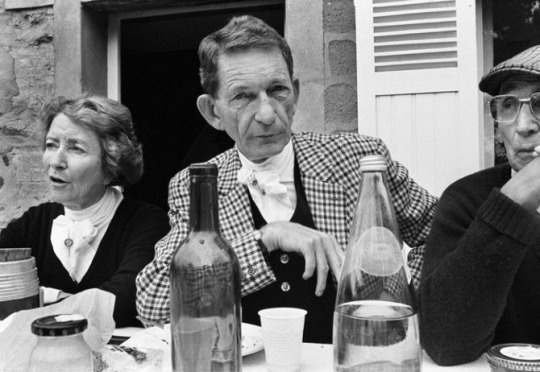
Unable to separate themselves from other social classes through economic or political means, they rely on their social rituals, traditions, and anachronistic way of life to reaffirm their distinct identity. The importance of the family, religion, history, and a deep-rooted attachment to the land, are values that bind them together as a social group.
At the same time, they are obliged to participate in modern economic and public life. Consequently, they have made certain adaptations so as to survive in the modern world and retain their distinctiveness. Most aristocratic children are members of social clubs called "rallyes" which is their primary form of social life. Thus, they may go to public school and still socialise exclusively with children of their own milieu. Another modern adaptation is the creation of the Association of the French Nobility (ANF) among whose functions is to lend tuxedos, party dresses, and wedding dresses to aristocrats who cannot afford their own. There’s no shame in it. It’s fun!

I have been told by my French partner and the French wife of my cousin as well as others that for them that being part of the French aristocracy is nothing more than an attitude more than anything else. In other words, a state of mind.
Aristocrats now have all different fortunes (literal and metaphorical) and they don't talk about it. As my partner dead panned, “That would be bourgeois.”
The old and antiquated values live on because there are ways to preserve them with less money: making sacrifices, traveling little, not having a nice car - but keeping what is essential, like the family property. The family and the family history is still the essential part of everyone's identity. It could be said that the roots of the family hold it up. Unlike many bourgeois families I see who live a very rootless and atomistic life in the rat race, the aristocrats do value the paramount principles of faith and family.

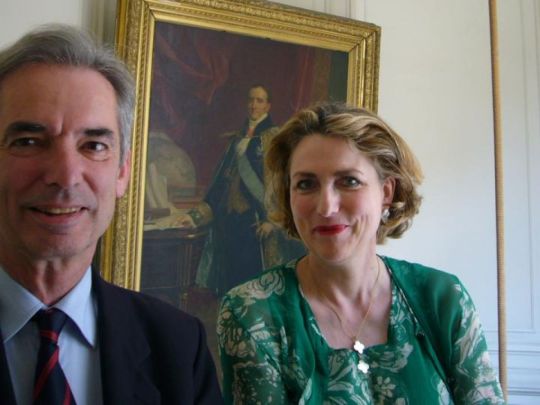
Sure, some noble families have retained wealth and influence but not as much as people might think here in France. They live in the better arrondissements of Paris and even provide captains of industry and finance or they are retired sitting on expensive properties as family heirlooms.
Where I live my two elderly neighbours in my building who both come from aristocratic roots. One is a reactonary (he’s a crusty old retired general) and the other used to run an art gallery and is a socialist (or Champagne socialist if one were being cynical). I’ve gotten to know them very well throughout our shared Covid incarceration as I’ve been doing chores and running errands for both of them and I’ve gotten to know their families as a result. They both remain cheerful and courteous, and it shows in their mild self-deprecation and unassuming social poise. But here they are not flashy and it shows. They buy things to last and don’t give a fig for fashion but insist on their own style. They abhor excess and self promotion.

But equally many others live discreet lives far from the capital, often in old chateaux whose upkeep is a financially crippling burden with each passing generation. These families as I have discovered first hand are more rooted to their local communities and play an invaluable role in safeguarding the cultural heritage of the surrounding village life. They are often the life blood of these rural communities. This is very true for the French wife of my cousin and her family who have been rooted in that community and village life for countless generations. It’s one of the reasons she is thr driving force behind the vineyard to maintain and pass onto the next generation the blessings she’s had along with her siblings.
Over two centuries, the French noblesse has had to perfect an odd social game compared to the aristos of England and Scotland.
France is staunchly republican (and very secularised in the separation of church and state), one of whose founding moments was a revolution in which many of their ancestors were killed horribly. Today the noblesse has no legal existence. There is no monarchy to lend it justification. The very idea of a caste of lords and ladies offends against France's prevailing cultural zeitgeist.

The brutal truth is that for better or worse France - since 1848 or even 1901 depending on your sense of history - belongs to the hypochondriac bourgeoisie. And as such the past time of the bourgeois seems to be consumed by social anxiety by constantly looking over their shoulder to feel secure about their social and economic status relative to others.
No such anxiety exists with the noblesse that I have witnessed. They know who they are almost as well as working people are proud of their blue collar heritage and roots.
I have to admit that the noblesse don’t feel particular glory from their origins but nor do they feel they have anything to be embarrassed about. Many of them do feel an old fashioned duty to pass on their family heritage. As a result most people born to the old families have learned to be discreet and not draw attention to their kind.
For me it’s fascinating to observe and experience and then contrast that with how things are in the United Kingdom or elsewhere for that matter. But what I come away with is this profound bond between them around their deep attachment to their Catholic traditions and their family roots. It’s quite comforting in some ways in a fast moving society that’s unmoored from the old certainties and instead subject to the faddish winds of change.

Thanks for your question.
#question#ask#aristocracy#nibility#noblesse#france#french#europe#family#personal#permission given to post personal pics
45 notes
·
View notes
Link
Full article:
By Drew Harwell and Eva Dou
Dec. 8, 2020 at 7:30 a.m. PST
The Chinese tech giant Huawei has tested facial recognition software that could send automated “Uighur alarms” to government authorities when its camera systems identify members of the oppressed minority group, according to an internal document that provides further details about China’s artificial-intelligence surveillance regime.
A document signed by Huawei representatives — discovered by the research organization IPVM and shared exclusively with The Washington Post — shows that the telecommunications firm worked in 2018 with the facial recognition start-up Megvii to test an artificial-intelligence camera system that could scan faces in a crowd and estimate each person’s age, sex and ethnicity.
If the system detected the face of a member of the mostly Muslim minority group, the test report said, it could trigger a “Uighur alarm” — potentially flagging them for police in China, where members of the group have been detained en masse as part of a brutal government crackdown. The document, which was found on Huawei’s website, was removed shortly after The Post and IPVM asked the companies for comment.
Such technology has in recent years gained an expanding role among police departments in China, human rights activists say. But the document sheds new light on how Huawei, the world’s biggest maker of telecommunications equipment, has also contributed to its development, providing the servers, cameras, cloud-computing infrastructure and other tools undergirding the systems’ technological might.
John Honovich, the founder of IPVM, a Pennsylvania-based company that reviews and investigates video-surveillance equipment, said the document showed how “terrifying” and “totally normalized” such discriminatory technology has become.
“This is not one isolated company. This is systematic,” Honovich said. “A lot of thought went into making sure this ‘Uighur alarm’ works.”
Huawei and Megvii have announced three surveillance systems using both companies’ technology in the past couple years. The Post could not immediately confirm if the system with the “Uighur alarm” tested in 2018 was one of the three currently for sale.
Both companies have acknowledged the document is real. Shortly after this story published Tuesday morning, Huawei spokesman Glenn Schloss said the report “is simply a test and it has not seen real-world application. Huawei only supplies general-purpose products for this kind of testing. We do not provide custom algorithms or applications.”
Also after publication, a Megvii spokesman said the company’s systems are not designed to target or label ethnic groups.
Chinese officials have said such systems reflect the country’s technological advancement, and that their expanded use can help government responders and keep people safe. But to international rights advocates, they are a sign of China’s dream of social control — a way to identify unfavorable members of society and squash public dissent. China’s foreign ministry did not immediately respond to requests for comment.
First she survived a Uighur internment camp. Then she made it out of China.
Artificial-intelligence researchers and human rights advocates said they worry the technology’s development and normalization could lead to its spread around the world, as government authorities elsewhere push for a fast and automated way to detect members of ethnic groups they’ve deemed undesirable or a danger to their political control.
Maya Wang, a China senior researcher at the advocacy group Human Rights Watch, said the country has increasingly used AI-assisted surveillance to monitor the general public and oppress minorities, protesters and others deemed threats to the state.
“China’s surveillance ambition goes way, way, way beyond minority persecution,” Wang said, but “the persecution of minorities is obviously not exclusive to China. … And these systems would lend themselves quite well to countries that want to criminalize minorities.”
Trained on immense numbers of facial photos, the systems can begin to detect certain patterns that might differentiate, for instance, the faces of Uighur minorities from those of the Han majority in China. In one 2018 paper, “Facial feature discovery for ethnicity recognition,” AI researchers in China designed algorithms that could distinguish between the “facial landmarks” of Uighur, Korean and Tibetan faces.
But the software has sparked major ethical debates among AI researchers who say it could assist in discrimination, profiling or punishment. They argue also that the system is bound to return inaccurate results, because its performance would vary widely based on lighting, image quality and other factors — and because the diversity of people’s ethnicities and backgrounds is not so cleanly broken down into simple groupings.
Such ethnicity-detection software is not available in the United States. But algorithms that can analyze a person’s facial features or eye movements are increasingly popular in job-interview software and anti-cheating monitoring systems.
Clare Garvie, a senior associate at Georgetown Law’s Center on Privacy and Technology who has studied facial recognition software, said the “Uighur alarm” software represents a dangerous step toward automating ethnic discrimination at a devastating scale.
“There are certain tools that quite simply have no positive application and plenty of negative applications, and an ethnic-classification tool is one of those,” Garvie said. “Name a human rights norm, and this is probably violative of that.”
Huawei and Megvii are two of China’s most prominent tech trailblazers, and officials have cast them as leaders of a national drive to reach the cutting edge of AI development. But the multibillion-dollar companies have also faced blowback from U.S. authorities, who argue they represent a security threat to the United States or have contributed to China’s brutal regime of ethnic oppression.
Eight Chinese companies, including Megvii, were hit with sanctions by the U.S. Commerce Department last year for their involvement in “human rights violations and abuses in the implementation of China’s campaign of repression, mass arbitrary detention, and high-technology surveillance” against Uighurs and other Muslim minority groups.
The U.S. government has also issued sanctions against Huawei, banning the export of U.S. technology to the company and lobbying other countries to exclude its systems from their telecommunications networks.
Huawei, a hardware behemoth with equipment and services used in more than 170 countries, has surpassed Apple to become the world’s second-biggest maker of smartphones and is pushing to lead an international rollout of new 5G mobile networks that could reshape the Internet.
And Megvii, the Beijing-based developer of the Face Plus Plus system and one of the world’s most highly valued facial recognition start-ups, said in a public-offering prospectus last year that its “city [Internet of Things] solutions,” which include camera systems, sensors and software that government agencies can use to monitor the public, covered 112 cities across China as of last June.
The “Uighur alarm” document obtained by the researchers, called an “interoperability test report,” offers technical information on how authorities can align the Huawei-Megvii systems with other software tools for seamless public surveillance.
The system tested how a mix of Megvii’s facial recognition software and Huawei’s cameras, servers, networking equipment, cloud-computing platform and other hardware and software worked on dozens of “basic functions,” including its support of “recognition based on age, sex, ethnicity and angle of facial images,” the report states. It passed those tests, as well as another in which it was tested for its ability to support offline “Uighur alarms.”
The test report also said the system was able to take real-time snapshots of pedestrians, analyze video files and replay the 10 seconds of footage before and after any Uighur face is detected.
The document did not provide information on where or how often the system is used. But similar systems are used by police departments across China, according to official documents reviewed last year by the New York Times, which found one city system that had scanned for Uighur faces half a million times in a single month.
Jonathan Frankle, a deep-learning researcher at the Massachusetts Institute of Technology’s Computer Science and Artificial Intelligence Lab, said such systems are clearly becoming a priority among developers willing to capitalize on the technical ability to classify people by ethnicity or race. The flood of facial-image data from public crowds, he added, could be used to further develop the systems’ precision and processing power.
“People don't go to the trouble of building expensive systems like this for nothing,” Frankle said. “These aren't people burning money for fun. If they did this, they did it for a very specific reason in mind. And that reason is very clear.”
It’s less certain whether ethnicity-detecting software could ever take off outside the borders of a surveillance state. In the United States and other Western-style democracies, the systems could run up against long-established laws limiting government searches and mandating equal protection under the law.
Police and federal authorities in the United States have shown increasing interest in facial recognition software as an investigative tool, but the systems have sparked a fierce public backlash over their potential bias and inaccuracies, and some cities and police forces have opted to ban the technology outright.
Such technologies could, however, find a market among international regimes somewhere in the balance between Chinese and American influence. In Uganda, Huawei facial recognition cameras have already been used by police and government officials to surveil protesters and political opponents.
“If you’re willing to model your government and run your country in that way,” Frankle said, “why wouldn’t you use the best technology available to exert control over your citizens?”
Discrimination against Uighurs has long been prevalent in the majority-Han Chinese population. In the Xinjiang region of northwestern China, authorities have cited sporadic acts of terrorism as justification for a harsh crackdown starting in 2015 that has drawn condemnation from the United States and other Western nations. Scholars estimate more than 1 million Uighurs have been detained in reeducation camps, with some claims of torture.
U.S. national security adviser Robert O’Brien called the repressive treatment of minority groups in Xinjiang “something close to” genocide, in an online event hosted by the Aspen Institute in October.
Under international pressure, Xinjiang authorities announced last December that all reeducation “students” had graduated, though some Uighurs have since reported that they were forced to agree to work in factories or risk a return to detention. Xinjiang authorities say all residents work of their own free will.
The U.S. government has banned the import of certain products from China on the basis that they could have been made by forced labor in Xinjiang.
One of the Huawei-Megvii systems offered for sale after the “Uighur alarm” test, in June 2019, is advertised as saving local governments digital storage space by saving images in a single place.
Two other systems, said to use Megvii’s surveillance software and Huawei’s Atlas AI computing platform, were announced for sale in September. Both were described as “localization” of the products using Huawei chips and listed for sale “only by invitation.” Marketing materials for one of those systems say it was used by authorities in China’s southern Guizhou province to catch a criminal.

Some things people outside of China can do to help:
Folks in the US: contact your house representative and your state senators. Demand that they support the Uyghur Human Rights Policy Act of 2019 (H.R. 649), and that they take further action against the genocide in Xinjiang. You can even link this article or copy and paste paragraphs (with citation) in your email if writing is intimidating for you.
Folks from most countries can write to your ambassador in China.
Avoid buying from companies that use Uighur slave labor.
Read the Australian Strategic Policy Institute’s analysis of slave labor and re-education camps in Xinjiang.
Boycott the Beijing 2022 Olympics.
21 notes
·
View notes
Text
Japanese epidemic deities

The relatively recent social media phenomenon centered around amabie, and to a smaller degree around other uncanny figures associated with epidemics like the hakutaku, Zhong Kui and Tsuno Daishi, offers an interesting opportunity to look deeper into the world of disease-related folklore – the beings who bring such plagues, these who protect from it, and most curiously deities and spirits which fulfilled both these roles at once. Under the cut, you will find an explanation of the term “ekijin”, the history of epidemic deities, and short profiles of a few of the most significant ones.
A particularly significant term when it comes to historical Japanese disease-related beliefs is ekijin (疫神), or epidemic god. It refers to a peculiar class of deities which usually existed on the crossroads between Shinto and Buddhism, particularly significant between the Heian and Edo periods. Simply put, an ekijin is a dual purpose god who both protects the faithful for pestilence, and smites the wicked, or these who simply lack sufficient devotion, with painful punishments. Ōshima Tatehiko identified a number of traits common for ekijin: being depicted as a traveling deity, taking the form of an old man or a child (though more outlandish demonic forms are also known), and a dual function as deity of both illness and good fortune or longevity. Other researchers suggested different traits as hallmarks of an epidemic deity: Sujung Kim considers them to be an association with bulls and foreign origin, in addition to the aforementioned duality. However, individual entities which can be classified as ekijin often embodied either the protective or punishing aspect much more heavily than the other; the balance between them also varied through time. Also, it's debatable if every disease-related religious or folkloric figure is an ekijin. The yokai turned social media darling amabie, for example, arguably shouldn't be considered one of them.
It's difficult to pinpoint when did this concept first develop – archaeological research indicates that, for example, Gozu Tenno was already known in Japan during Nagaoka's brief role as a capital (784 to 794). Some scholars, like Michael Como, suggest that the concept of a wrathful disease deity emerged at the same time as a consolidation of the imperial court's power, and to a degree might've represented a fear of instability caused by local deities, which had to be placated with appropriate rites – otherwise not even the emperor would have been safe from their attacks. It's also worth noting that disease demons either reformed by Buddhist or Taoist heroes or answering to afterlife deities and either subduing other demons or administering punishments to mortals on their behalf were already a staple of Chinese folklore of the Tang era, which indicates the later ekijin might've been a synthesis of many separate traditions, both local and imported. The concept of ekijin was further popularized by Konjaku Monogatarishū (今昔物語集 - Anthology of Tales from the Past) – most of the stories contained in this anthology which describe dealing with diseases blame them on vengeful spirits, curses, and, of course, epidemic deities. Some of the most famous epidemic-related deities, most of whom can be considered ekijin, include:

Matara-jin (摩多羅神) – a mainstay of this blog, a god of removing obstacles turned god of fate turned god of noh turned god of rulership turned subject of heated academic debates. According to Tendai tradition, he appeared in front of Tendai's founder Ennin and informed him that if he can remove the obstacles to rebirth in Pure Land if the correct rites are performed, Matara-jin's ekijin function is tied to this role – as demons were seen as agents of disease, deities meant to repel the spiritual dangers, obstacles on the path to enlightenment, were also capable of repelling the much more corporeal ones. Simultaneously, the most effective means of repelling such calamities were simply their placated past causes – and many protective deities were presented as such. Matara-jin was venerated as an ekijin first and foremost through ox festivals (ushimatsuri), as depicted above. Matara-jin can be considered largely analogous to other similar deities, such as Shinra Myojin, which ties him directly with the next two figures which will be described here. It's also worth pointing out that Matara-jin likely developed from a number of elements originally associated with the Chinese afterlife deity Taizan Fukun, who according to some Tang and Song dynasty sources presided over disease deities, who in many Chinese folkloric accounts formed a part of the afterlife bureaucracy.
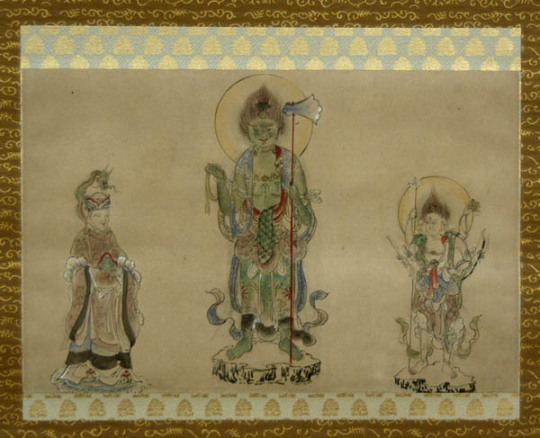
Gozu Tenno (牛頭天王) – a syncretic deity whose origin is at least in part shrouded in mystery, as stated above seemingly known in Japan since the 8th century. Korea has been often proposed as his point of origin, even though the myths pertaining to this figure tend to describe him as an Indian deity (often as a protector of the ancient Jetavana monastery in present day Uttar Pradesh) – he was however usually depicted in Chinese garb. Gozu Tenno's function as an epidemic deity likely developed from the association between him and sandalwood, prized in Buddhist text for its religious and medicinal usage. He was viewed as the Buddhist counterpart of Susano-o – however, he was simultaneously himself seen as a manifestation of Yakushi Nyorai, the “medicine Buddha”. This is one of the most prominent examples of ekijin existing on the crossroads between Japan's two most significant religions, as I stated earlier. This complex nature was the undoing of Gozu Tenno's worship – during the Meiji religious reforms, he was singled out as a deity unfit to remain worshiped due to evading easy classification, and most of his shrines were abolished or changed into ones dedicated exclusively to Susano-o alone.

Susano-o (スサノオ) – while today remembered mostly due to his classic mythological role in the tales contained in the Kojiki and Nihon Shoki, at least from the Kamakura period onward he was significant as part of a network of disease deities encompassing, among others, Shinra Myojin and Gozu Tenno; the latter was paired with Susano-o under the honji suijaku system of beliefs. Kyoto's famous Gion shrine, today dedicated to Susano-o, though formerly associated more with his Buddhist counterpart Gozu Tenno, also has a small subsidiary shrine called the Ekijin Shrine ( 疫神社), associated with Susano-o's role as an epidemic god. According to a myth associated with it, Susano-o informed a local inhabitant, Somin Shorai, how to save himself from disease to thank him for offering him shelter while he was traveling in the guide of a poor mortal; as Somin learned later, these who refused to help the disguised deity died from the epidemic he could protect himself from thanks to this advice (similar tales about Gozu Tenno existed as well). Curiously, the Gakuenji temple associated Susano-o with Matara-jin rather than Gozu Tenno. In art of the late Edo and early Meiji period Susano-o was sometimes portrayed as a sovereign ruling over various disease spirits and preventing them from harming humans, as seen on the images included here.
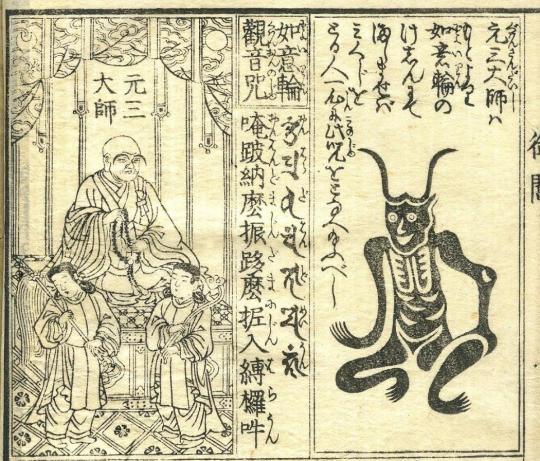
Tsuno Daishi (角大師) – a bizarre deified form of the celebrated Tendai monk Ryogen. Tsuno Daishi's dual nature as both a demonic entity ruling over legions of malevolent creatures and a reliable protector from outbreaks of disease was the result of a complex process which combined condemnation of Tendai and Shingon establishment by detractors within these Buddhist schools themselves and new Buddhist movements with a philosophy according to which even demonic entities could be used as means for salvation. Later legends claimed that Tsuno Daishi was a form Ryogen took to expel demons of disease from his own body, and artwork depicting him was produced and circulated commonly as a ward against disease. Curiously, while his appearance is sometimes assumed to be derived from the fearsome wisdom kings such as Fudo Myo-o, he's viewed as a manifestation of Kannon, and many ofuda depicting him reference this in some capacity up to this day.
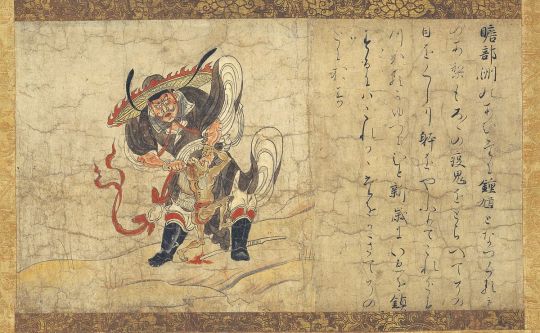
Shoki (鍾馗) – the Japanese adaptation of the ever popular Chinese folk hero, Zhong Kui. According to the most famous version of the legend, he was a skilled physician who wanted to serve in the imperial palace, but despite his talents was denied the possibility to do so due to his ugly appearance, which lead him to committing suicide out of despair. He purportedly later showed himself to emperor Xuanzong in a dream, where he protected him from disease-causing demons, which granted him the position of a supernatural defender from disease and demonic incursions. According to some versions, the afterlife kings presiding over reincarnation appointed him to the position of a ruler and queller of supernatural entities because while he died in a way considered sinful, his talents were viewed as too valuable to waste. In Japan, he became popular in the Edo period, though earlier depictions do exist, like the one from the Extermination of Evil (辟邪絵) scroll from the late Heian period, seen above.

Hakutaku (白澤) – another guest from China. Known there under the name bai ze, this creature purportedly informed the Yellow Emperor that there are exactly 11520 kinds of supernatural creatures in the world, and explained how to subdue or placate each of them. The manual created in the wake of this event was considered, among other things, a medical treatise. In Japan, the hakutaku became a popular good luck charm in the early Edo period, and was said to ward off misfortune, dangers one could encounter while traveling, bad dreams and disease (especially cholera). While some online sources classify hakutaku as a yokai (in the rigid sense applying this term only to boogeymen, rather than anything strange or fortean like Shigeru Mizuki wanted) viewing it as a fortune or epidemic god seems to make more sense, and it's referred to as a deity for example by some art scholars. With time, hakutaku was largely conflated with or replaced by the baku, leading Lafcadio Hearn to viewing these two creatures as one and the same; the statue of a hakutaku protecting a certain temple is known as “king baku” for similar reasons today.

Daruma ( 達磨) - rather curiously, in the Edo period the honored Zen patriarch joined the ranks of ekijin – as noted by Bernard Faure, he specifically became a hōsōgami (疱瘡神), or smallpox god. This was likely entirely due to the fact he was depicted wearing red robes, as red was said to be a color which either repelled disease spirits or favored by them to such a degree that they would spare these dressed in red. Further reading:
Michael Como, Horses, Dragons, and Disease in Nara Japan
Bernard Faure, From Bodhidharma to Daruma: The Hidden Life of a Zen Patriarch
Richard Von Glahn, Sinister Way: The Divine and the Demonic In Chinese Religious Culture
Bettina Gramlich-Oka, The Body Economic: Japan's Cholera Epidemic of 1858 in Popular Discourse
Donald Harper, 'Hakutaku hi kai zu' (White Marsh Diagram to Repel Ominous Prodigies)
Sujung Kim, Transcending Locality, Creating Identity: Shinra Myojin, a Korean Deity in Japan
Christoph Kleine, Buddhist Monks as Healers in Early and Medieval Japan
Neil McMullin, On Placating the Gods and Pacifying the Populace: The Case of the Gion "Goryō" Cult
Haruko Wakabayashi, From Conqueror of Evil to Devil King: Ryogen and Notions of Ma in Medieval Japanese Buddhism
68 notes
·
View notes
Text
Raleigh Apartment Culture
So I'm of the mind that Raleigh is a great place to live. It has my favorite things, my favorite people, and I'm too broke to move anywhere else.
Raleigh works for me, but I recognize it doesn't work for everyone. Some people had less than ideal childhoods and wanna escape the state ASAP, some just want to live closer to their dream jobs or have new opportunities. That's all fine, but what if this describes where you are now?
What if, for the sake of argument, you're outside of NC and wanna move in? Moving is expensive, time-consuming, and risky at the best of times; so you wanna make sure that wherever you're landing is at least as good as where you started 90% of the time
"But RL," I hear you say, "you make Raleigh sound like an idyllic dreamscape populated with parks and a diverse kumbayah of peoples living in harmony"
I do talk about Raleigh in a positive light but, like a life saving medicine flavored like ass, sometimes you have to take the good with the bad.
So before you spend thousands of dollars on moving vans, boxes, and grits; here's a crash course on what it's like living in a Raleigh apartment, coming from someone whose majority of Raleigh Living (heh) has been in apartments.

First off, location. Any realtor will tell you that location is 80% of the sale to sound profound, and as anyone who has lived in the middle of ass-backward nowhere can tell you: It sucks having to drive 30 minutes to go anywhere.
Good news: With the Raleigh Beltline and connecting roads, there are very few places in Raleigh where your trip will last longer than thirty minutes one-way. Bad News: where you set down still matters because cutting down on travel is important for car and mental health.
North Raleigh is different from south Raleigh is different from northwest Raleigh, and the locals aren't the only difference you'll find between locations. Each segment of Raleigh has something to offer, with easier access to some attractions than others and neighboring cities for when you need something outside the RDU area.

Using downtown as the center of our wheel, people generally divide Raleigh into North and South Raleigh (with distinction given for NW, SE, NE, etc when needed). N.Raleigh is considered generally more upscale, a slice of suburban living interspersed with plenty of shopping centers for families and the moderately wealthy; but it's boring as all hell.
Want some fun? Excitement in the evenings and a more traditional urban experience with bars, night clubs, strip clubs, and more? South Raleigh is your best bet, at the cost of being the "sketchy" side of Raleigh. That kind of place where you'll see a bunch of auto shops that look abandoned but haven't been closed in the past 5 years and there's at least one customer from time to time.
Of course, this is a lot of generalizing but you'll find that it's still mostly accurate. The main exception in this is Capital Blvd, a highway cutting across north and south Raleigh on the eastern half of the city; a high crime corridor that's undergoing some changes in the northern half that have (somewhat) reduced crime but most people will still associate that area with the majority of Raleigh's crime and debauchery.

More importantly, is the distinction Raleigh citizens put on inside the beltline versus outside the beltline. The I-440 and 540 highways that wrap around Downtown form the mythical beltline, and to a degree what you have access to. Inside the beltline is the majority of workplaces, stores, and shopping centers; while outside you'll still have these things just to a more... dispersed extent.
North Raleigh actually kinda exemplifies this perfectly. Living inside the beltline, you have access to places like North Hills, Crabtree Valley mall, and Triangle Town Center. Live outside the beltline, like I currently am, and you're looking at 10 to 15 minutes to the nearest sheetz for that late night double hot dog fix.
So for point one: How important is it that you're near things? The majority of apartments and rental properties are in or around the belt-line, but if you want to save some cash on rent checks the cheaper properties are gonna extend your trips a bit.

Next, what can you expect in terms of neighbors? Does Raleigh have a hip party scene full of teens renting cheap apartments and blasting trap music at 3AM?
Depends on where you live
I swear not every point is going to be this, but there's an important distinction this time that affects the type of people your complex will likely have surrounding you; are you in North or South Raleigh?
North Raleigh has a ton of pre-schools, k-12 public schools (Leesville, Hillburn, Lead Mine, just to name a few), and office complexes that make up the job market. As a result the majority of apartment renters in north Raleigh tend to be families with a few small kids or so.
As a result, living off of Glenwood North and Edwards Mill I never had any noise problems from neighbors, the worst being kids playing outside at 3PM sounding like they were being murdered (which apparently is a common thing and I apologize to any neighbors I frightened with ghastly shrieks).

What I did have a problem with, however, was the typical Karen's you hear people complain about online. Renting a property now, we have access to our neighborhood's NextDoor page and it's hilarious sometimes to go on and read the comments, but living at a certain property we had a sort of mini-Facebook for residents
That thing was always full of either people who were moving out looking to sell their furniture or people passive-aggressively challenging each other/the apartment managers with comments about things happening around the complex.
Once I logged in to see one man accuse another, without ever actually accusing someone specific ("I know who did it and they should be ashamed" type post) of putting glass beer bottles under the tires of his truck to try and puncture them. Everyone acts civil in public, but then online they'll stir the pot harder than a chef with a hand mixer.

South Raleigh, you have the schools like Shaw University, Meredith, and NCSU; so the people renting down there are typically college kids. You'll see more apartments that cater towards them like University Village or University Woods, but sometimes these places will cater to both college kids and working adults
Avoid these places like the plague, because despite sometimes having a lower cost to live there the neighbors and their shenanigans will drive you up the wall (unless you're the type to join in, then go wild).
I've had friends stay at places like University Village and The Proper (formerly The Vie, formerly Wolf Creek) who've shared horror stories. 3AM parties ending in property damage or vomit in inconvenient places, drug deals not even trying to be subtle, and maintenance workers doing nothing because regardless of the apartment conditions; no school's gonna pull their contract with them unless news articles start getting written.
http://www.technicianonline.com/news/article_898ddf34-82f5-11e7-b3d8-07059d248619.html
https://www.wral.com/vie-at-raleigh-residents-finally-able-to-move-into-clean-units/16887833/
http://www.technicianonline.com/news/article_ea8ed7aa-a092-11e8-a2af-e70af36566d0.html
Otherwise, south Raleigh apartments are largely like north Raleigh apartments; except the crime rate tends to be a little higher and you'll run into more singles and people working full time.

Otherwise, Raleigh apartment culture is like apartment culture anywhere else in the country. You have a mix of apartments catering to those just looking to live versus more ostentatious luxury apartments with fancy pools, exercise facilities, and tech packages to draw people in.
If you're renting in Raleigh, however, do try to get a roommate or two if you can manage. Even with a decent job paying 800+ on a one bedroom one bath apartment can be exhausting at best, but with even one other person that can functionally halve your expenses
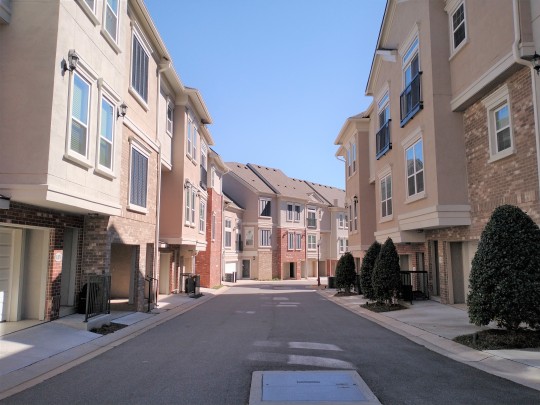
So if you're a young professional, or a student, or even if you have a small family, I can safely recommend renting in Raleigh. There's plenty of places that'll accommodate you, and cater towards your needs.
But what about everyone else? Are there people who shouldn't rent in Raleigh?
No
But there are groups who I'd seriously ask to consider their other choices before picking Raleigh as a destination for their new home.

For instance, are you a member of the LGBT community? A trans or non-binary individual? Well then, first off, I want you to know that you're loved and valid. I'm accepting of who you are and appreciate everyone's right to identify how they choose, but I'm not everyone.
Raleigh's bluer than other parts of North Carolina, as I've stated in other blog write-ups, but it's still part of North Carolina unfortunately and as a result, you'll face some challenges.
I doubt anyone's gonna burn a cross in your yard or knock over your mailbox, but Raleigh doesn't offer LGBT protections for housing, jobs, or credit/lending discriminations according to the Movement Advancement Project's website.
We have support organizations for LGBT and NB individuals, plenty of high schools and colleges have Gay-Straight Alliance clubs, and there are numerous businesses downtown that cater specifically to those individuals... but we're also the state that got into a lot of hot water because of a stupid bathroom bill, and our politicians are trying to pass anti-trans sports legislation (because they now magically care about the integrity of womens sports).
By that measure, but to a lesser extent, if you fall outside the Liberal/Conservative political spectrum then be prepared to have no one to discuss your politics with outside of a few sparse networks like the DSA.

Additionally, if you don't have someone to room with or a significant other to split costs with; you may want to try searching somewhere a little cheaper.
I've said it before and I'll say it again, Raleigh housing prices aren't terrible for a major metropolitan city, but we're not the best prices in the world.
You can get prices on apartments and rentals lower than say, California or New York. However, compared to other parts of NC like Greensboro or Garner; rentals are still a bit much.
On average, a Raleigh apartment can run you about $900 for a single bedroom and a single bathroom. You can find cheaper, but often times there's some risk associated (Crime levels, quality of the room, quality of the property manager, etc.) Looking for a two bedroom? Then your average price is gonna jump up to around $1,200, and this is all before utilities and cable come into play.
It's true a lot of companies around here will pay more than the $7.25 minimum wage, but most low-skilled jobs will pay around 10-11 an hour.
I guess though, that's kind of an obvious statement. "Don't live in Raleigh if you can't afford to live in Raleigh."
I might expand on these thoughts at a later time, but hopefully for now I've given you some food for thought; or at the very least an entertaining read for a few minutes.
I love my city, and I love the friends I've made in it, but the sad truth is that nowhere is perfect for everyone; leastways Raleigh. If Raleigh sounds like the kind of place you'd like to live in, at least take a day trip to come visit and see how things go that way. Visit some stores, meet some locals, and form an opinion off of more than travel blogs and youtube videos.
#raleigh#North Carolina#NC#north carolina#travel#photography#urban photography#city life#city#city of raleigh#advice
7 notes
·
View notes
Text
What’s My Agenda: the Future of Work and Work Technologies, or Work Futures
People tend to think of not knowing as something to be wiped out or overcome, as if ignorance were simply the absence of knowledge. But answers don’t merely resolve questions; they provoke new ones.
| Jamie Holmes, The Case for Teaching Ignorance
[Note: This piece was originally published in August 2015 at Gigaom.com. I am reposting it here as a response to various inquiries, where people have been asking for more of a background on the topic of work futures. It has been slightly updated and reformatted.]
The central line of inquiry for my work as an analyst and researcher is the future of work and work technologies, or ‘work futures’, for short. Before breaking that down, let me try to clarify what those terms mean. I will do so by asking a few questions, with Jamie Holmes’ observation, above, in mind.
‘The future of work’ is an academically-oriented domain of discourse, with a strong lean into new theories of humanist business management, and with closely related ideas of economics and organizational development.
On one hand, the intent of the phrase ‘the future of work’ is obvious, just like any other ‘future of’, such as ‘the future of dentistry’ or ‘the future of the European Union’. But the reality is that the meme of ‘the future of work’ has developed a strong connotation related to a specific set of progressive ideals about work, and an underlying implicit criticism of the state of work today, and the preceding era, as well.
‘The future of work’ is an academically-oriented domain of discourse, with a strong lean into new theories of humanist business management, and with closely related ideas of economics and organizational development. As a simplification, I have been using work futures as a shorthand or synonym for ‘the future of work and work technologies’, and will do so for the rest of this post and going forward in general. In fact, work futures was the name of the consulting company that I created when the old Gigaom shut down in March 2015.
The growing interest in work futures has arisen as a central area of discussion about organization, management, and adaptation to new technologies, especially those which are based on the form and function of social networks and social media. This is an expansion and absorption of the discipline called social business, that started in the early ’00s and had been drained of emotive force by 2010, principally due to the blur caused by vendor marketing that has drifted back into the ‘right information to the right people at the right time’ vein, and lost the thread of a more humane workplace and the aspiration for people to find meaning and purpose in work.
The first wave of social business was principally an adoption of technologies like blogging, wikis, forums, intranets, community software, and various sorts of messaging. This was an early phase, much of which predated social networks like Twitter and Facebook.
The second phase of social business tech was more of an aspect of Web 2.0 era technologies, transitioning to software-as-a-service, and increasingly mobile. However, it was principally a desktop-based era, and newer solutions and practices have emerged which are much more mobile at their core, and less likely to be deployed behind the firewall on company servers.
Enterprise 2.0 was a school of thought that was strongly technology centered, based on the parallelism with the term Web 2.0. It was a school of thought that took the ‘tech’ side in the perennial debate about ‘which is more important, the technology or the people side of social business?’ Andrew McAfee of MIT is perhaps the leading advocate for the term, but it has been displaced first by ‘social business’ and now by ‘the future of work’ and ‘digital transformation’.
Digital transformation can be thought of as an industrialization of the thinking behind the research and practice of work futures, building around the growing popularity of customer experience as a unifying metaphor for customer-centered business thinking in an increasingly digital world.
Just as fast as social business has been eclipsed by work futures, in turn work futures is rapidly being crowded out in entrepreneurial and existential management and tech circles by digital transformation. Digital transformation can be thought of as an industrialization of the thinking behind the research and practice of work futures, building around the growing popularity of customer experience as a unifying metaphor for customer-centered business thinking in an increasingly digital world.
Here’s a definition I used in a recent presentation:
Digital Transformation: A new operating model of business — based on continuous innovation — by the application of digital technologies and the restructuring of operations around customer experience to better engage with customers, the company ecosystem, and the greater marketplace.
Note that the work futures content is buried mostly in the ‘restructuring of operations’ phrase, and the shape and tenor of those changes is in service to the need to get onto a digital footing in relation to customers. The focus on humanization and democratization of work in work futures discourse is shifted to customers at the center of the digital transformation weltanschauung.
I threw out the terms ‘entrepreneurial and existential management’ above, and they warrant some unpacking.
Entrepreneurial management is the branch or thread of management thinking and writing that extols entrepreneurialism above other approaches, venerates start-up culture, and which advocates for the application of practices that have come from that quarter for other, and older, companies. This includes lean and agile practice, data-centered management, and valuing experimentation and learning over tradition and institutional knowledge. There is much to admire in entrepreneurial thought, but there are aspects of this body of thought that carry forward questionable practices from the past, such as the central role of consensus building which can lead to group think and the suppression of innovation and diversity.
Existential management takes entrepreneurialism and macro-economic ideas–like Christensen’s disruption theories–and casts the challenges of business into a zero sum landscape shaped by arguments to induce management to operate through a sense of impending doom, that without new principles of business their companies will crash and burn. To the good, there are times when raising the spectre of a dangerous future can help focus attention, but this is easily overused.
I am not making light of the core truths of some of these ideas, such as the potential for companies to disrupt established industries or markets, as Apple, Google, and Uber have done, or the vast potential of lean and agile practices for business. However, the tendency toward hyperbole, and a deeply sententious, and sensationalist writing style by many in these threads often obscures the foundational value of the core ideas being expressed.
At the highest level, those exploring work futures blend cultural and economic criticism, advocacy for a more humanistic set of principles for the management and operation of business, and the scientific insights coming from fields like complexity theory, cognitive science, behavioral economics, and social psychology. As I said in a recent keynote, the shared premise of those investigating work futures is the application of new understanding about human interaction, motivation, and drive, and to embody that understanding in a new way of work.
In the months and years to come I will continue to explore and research the threads that make up the fabric of work futures, including these:
Tools for Work Communications: ‘Social Collaboration’, Work Management, Work Chat, Working Out Loud, and Workforce Communications — I will be closely observing the shifting landscape of the tools being applied for work communications, and the many diverging and competing theories of management that are buried in their architectures.
Culture Management — The tools and techniques being used to create an organization climate where higher levels of feedback and greater degrees of quantitative assessment of engagement lead to a better understanding of the sentiment and orientation of all involved in the workplace.
The New Social Contract — I’ve started a new series on Gigaom Research focused on the changing social contract: the operating premises that underlie the relationships between employees, management and the extended workforce of part-timers, freelancers, and independent and dependent contractors. The new social contract is also influenced by issues like diversity, economics, regulation, and the role of government and other non-corporate actors, like unions.
AI, Robots, and The Ephemeralization of Work — The rising power of robots, artificial intelligence, and algorithmic processing of data is leading to many occupations being taken over in whole or part, with humans having to find work elsewhere. This is one of the most critical trends in work futures. I wrote in the Pew Research report AI, Robots, and the Future of Jobs,
The central question of 2025 will be: What are people for in a world that does not need their labor, and where only a minority are needed to guide the ‘bot-based economy’?
Fast-and-Loose Organization and Culture — A great deal of the smoke and heat in ‘the future of work’ is about new forms of organizations relying on different cultural foundations. This includes the democratization of work in general, and the adoption of new approaches — like Holacracy — that rework the notions of business management. The emerging consensus is that organizations are moving toward lateral and bottom-up networks and away from top-down hierarchies. (Note that hierarchies are networks, too, but ones with slow-and-tight forms of communications and control.) Today’s companies are becoming fast — agile, flexible, resilient — as opposed to slow — stable, rigid, unchanging. To become fast, you have to become loose: relaxing the strong ties of hierarchic controls. I will be tracking the advances made in this area closely.
Leadership and Management — Even management gurus have been suggesting that management has to be rethought in light of the changing conditions for organizations, today. Gary Hamel described the need to move away from bureaucracy in The Beyond Bureaucracy Challenge: Creating Inspired, Open, and Free Organizations, and asking the questions that will shape my investigations in this area:
Managing is largely about controlling and coordinating — the question is, can the work of managing be pushed out to the periphery of our organizations? Can it be automated? Can it be dispensed with entirely? Is it possible for an organization to be highly decentralized and precisely synchronized? Can you get discipline without disciplinarians? Are there ways of combining the freedom and flexibility advantages of markets with the control and coordination advantages of traditional hierarchies? Can we reduce the performance drag of our top-heavy management structures without giving anything up in terms of focus and efficiency? To what extent can “self-management” or “peer-management” substitute for “manager-management?”
Lamentably, bureaucracy lives on, where the few rule the many, and hierarchic management is still accepted as the norm. Entrepreneurial management is becoming the norm, but that may not be going far enough.
Innovation, Creativity, and Learning — Central to many discussions about work futures is the premise that increasing innovation in established companies is problematic, but unleashing the creativity of employees is essential for companies to compete and survive in times of rapid change. As a result we see a great deal written about practices to increase innovation, such as continuous learning, and the selection of people with certain psychological traits — like curiosity — as a precondition of increased innovation.
Cognitive Science — It’s interesting to see that cognitive science has recently shed light on common fallacies about learning, such as the notion that we learn better by focusing on a single skill at a time (see Cognitive Science Upends Conventional Wisdom About Studying). Like that example, there’s a long list of new findings from cognitive science that should have major impacts on business, management, and how we perceive behaviors at work: others and our own. However, much of these findings haven’t found their way into the workplace.
Work/Life Balance and the Costs of High Performance — Recent discussions about the costs of high pressure work environments — including the buzzfest about the New York Times exposé of Amazon — have brought the tension between ‘high performance’ workplaces and work/life balance to the forefront. I will be at the forefront of those discussions.
Open offices, remote work, and the mobile workforce — A revolution has taken place in business in just the past five years, driven by the rise of mobile devices and ubiquitous connectivity, we’ve witnessed wholesale changes in the physical layout of offices and the diaspora of workers from the old notion of working nine-to-five at the same desk for twenty years to a way of work that would have been unimaginable ten years ago.
Incentives, Meaning and Purpose — Moving past the extrinsic motivations of money and benefits, one of the major themes in work futures is interleaving intrinsic motivations — like meaning and purpose — into a larger mesh, in which human striving can be better understood.
Digital Transformation — Digital transformation is gaining greater weight as a result of growing awareness regarding the ‘digital customer’ (which might be better considered the ‘connected customer’). The premise is that businesses have to basically turn themselves inside out to engage customers who are migrating away from traditional forms of media consumption, and are now connected at nearly all times through mobile and other digital devices. This is associated with the growing role of new marketing thinking — based on reaching the customer at all ‘touch points’ along the ‘customer journey’ — and the declining power of the CIO and IT. Companies undergoing a digital transformation often appoint or hire someone to act as chief digital officer, which may be a stint while the company is being transformed, or may be a replacement for the CIO.
You can be sure that I will be trying to create new questions, not just answer the ones I am starting with.
It is, I realize, a broad palette, and I am sure that I am setting myself a stretch goal to included all of these topics. On the other hand, considering how these topics inevitably influence each other — or better said, are inherently tightly linked to each other — it would be pointless to enumerate only a few of these and to pretend that the others can be ignored.
You can be sure that I will be trying to create new questions, not just answer the ones I am starting with.
2 notes
·
View notes
Text
2019 In TV - My Top 10 Shows
This past year may have sucked balls in a lot of ways, but we certainly never got short-changed when it came to our TV. There was an absolute WEALTH of truly cracking TV around, both on regular networks and on the various on-demand platforms, and so here is my pick of the best, my absolute favourites of 2019.
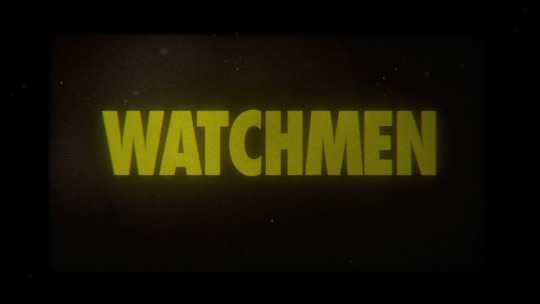
10. WATCHMEN
Lost co-creator Damon Lindelof brings us a blinding sequel to comic book legend Alan Moore’s legendary graphic novel with a delightfully trippy, ruthlessly efficient rug-puller that seems pretty tailor-made for HBO. Old faces return in interesting ways, while there are some cracking new “masks” on offer, particularly Regina King’s Sister Night and the always-brilliant Tim Blake Nelson as morally complex antihero Looking Glass (in some ways very much the show’s own answer to Rorschach). It never goes where you expect it to go, and refuses to give easy answers to the questions it raises, effortlessly paving the way for more next year ...

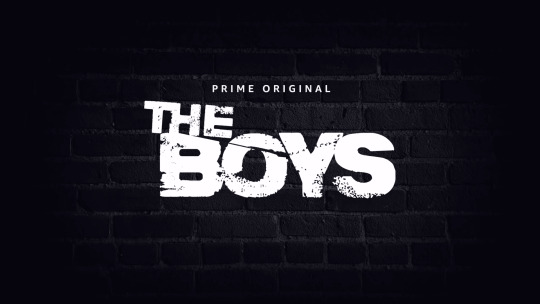
9. THE BOYS
Amazon offers up its own edgy, thoroughly adult superhero property with this darkly funny antiheroic gem based on the cult Garth Ennis comic, expertly adapted by Supernatural creator Eric Kripke. Karl Urban dominates as Billy Butcher, the foul-mouthed, morally bankrupt “leader” of a makeshift crew of mercenaries, hitmen and psycho killers devoted to “taking care of” superheroes when they inevitably go bad. Season 1 ultimately serves as an origin story, showing how the team come together, laying quality groundwork for the incoming sophomore tour that promises to open the already fascinating world out significantly.


8. PREACHER (SEASON 4)
More Garth Ennis, namely this blinder of a closing season for AMC’s consistently impressive adaptation of his best known series for Vertigo comics. Surprisingly epic, deliciously subversive and constantly, darkly hilarious, this thoroughly non-PC series from showrunners Sam Catlin, Evan Goldberg and Seth Rogen (yes! I Know!) certainly went out on a high note, providing its loyal followers with perfectly-pitched bow-outs and sometimes heartbreaking goodbyes for all its players, especially its dynamite leads, Dominic Cooper, Ruth Negga and, in particular, Joe Gilgun as unapologetic bad boy vampire Cassidy. A worthy end to one of my all-time favourite TV shows.
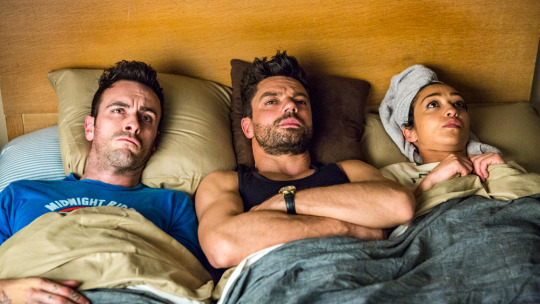
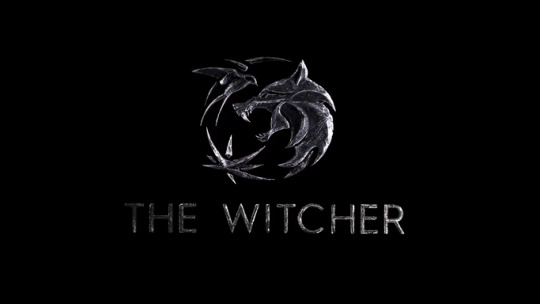
7. THE WITCHER
While it’s clearly taken its look from the wildly successful video games, Netflix’s second most ambitious long-form offering of the year takes its lead from the fantasy book series by Polish author Andrzej Sapkowski that started it all. With its somewhat episodic set-up and decidedly twisted narrative timelines, it take a few chapters to get the hang of it, but there’s plenty to draw you in, from the exotic world-building to the frenetic action and compelling collection of richly crafted characters. Henry Cavill is the titular hero, lovably grouchy mutant monster-hunter Geralt of Rivia, but the real scene-stealer is co-star Anya Chalotra as roguishly self-serving mage Yennefer of Vengenberg.

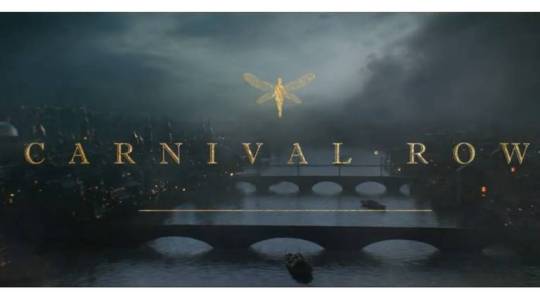
6. CARNIVAL ROW
One of the year’s two big sleeper hit TV surprises for me was this inventively offbeat allegorical Amazon fantasy series from The 4400 creator René Echevarria and screenwriter Travis Beacham. Orlando Bloom and Cara Delevigne are the star-crossed lovers at the heart of this intriguingly dark and dirty murder mystery thriller set in Victorian London-esque city-state the Burgue, in which humans struggle to co-exist alongside a struggling disenfranchised underclass of fae (fairies, fawns, centaurs and the like). The racial turmoil undertones are writ large throughout, but this is far more well-written and lavishly appointed than you might expect on first glance, and almost ridiculously addictive viewing.


5. LOVE, DEATH + ROBOTS
My other big TV surprise was this wonderfully bizarre sci-fi anthology series of animated shorts from Netflix, mostly adapted from an eclectic selection of short stories from a wide range of top-notch literary talent including Peter F. Hamilton, John Scalzi, Marko Kloos and Alastair Reynolds (a particular favourite of mine). As you’d expect from the brainchild of Deadpool director Tim Miller and producer David Fincher, this is edgy, leftfield stuff, frequently ultra-violent and decidedly adult, and the wildly varied nature of the material on offer makes for a decidedly uneven tone, but there are some absolute gems on offer here, my favourite being Suits, an enjoyably simple tale of salt-of-the-earth farmers on an alien world utilising clunky mech suits to protect their settlement from rampaging giant xeno-bugs.
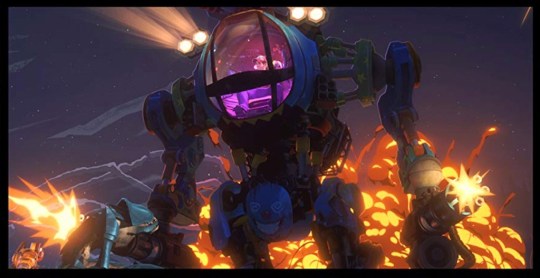
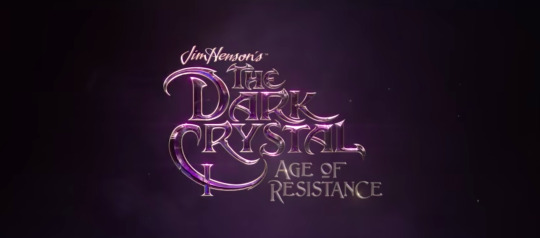
4. THE DARK CRYSTAL: AGE OF RESISTANCE
The show with the biggest cinematic wow factor in 2019 had to be this long-awaited prequel series to Jim Henson’s classic fantasy movie masterpiece, created for Netflix by, of all people, Louis Leterrier (yes, the director of The Transporter, Now You See Me and Clash of the Titans, if you can believe it). The technology may have evolved in leaps and bounds, but there’s a wonderfully old school vibe in the delightfully physical puppet effects used to bring the fantastical world of Thra and its denizens to life, so that it truly does feel like it’s based in the same world as the film. This was EASILY the most visually arresting show of 2019, packed with exquisite character, creature and set design that perfectly complements the awesome work done by Henson and Brian Froud on the original, while the writers have created a darkly rich narrative tapestry that makes Thra seem a more dangerous place than ever.

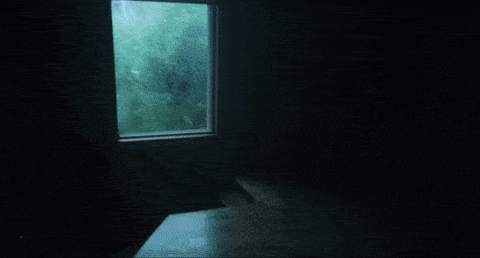
3. THE UMBRELLA ACADEMY
I was a HUGE fan of My Chemical Romance frontman Gerard Way’s magnificently oddball alternative superhero comic, so when I learned that Netflix were adapting it I was a little wary because I knew how spectacularly hard it would be for ANY showrunners to get right. Thankfully Steve Blackman (Fargo season 2) and Jeremy Slater (The Exorcist TV series) were the right choice, because this perfectly captured the outsider nature of the characters and their endearingly dysfunctional family dynamic. Ellen Page, Tom Hopper (Black Sails, Merlin), David Castañeda and Emmy Raver-Lampman are all excellent as the more “functional” Hargreeves siblings, but the show is roundly stolen by Misfits star Robert Sheehan and Nicky, Ricky, Dicky & Dawn’s Aidan Gallagher as nihilistic clairvoyant Klaus and the old-man-in-a-child’s-body sociopath known only as Number Five. Consistently surprising and brilliantly bonkers, this was definitely the year’s most wonderfully WEIRD show.

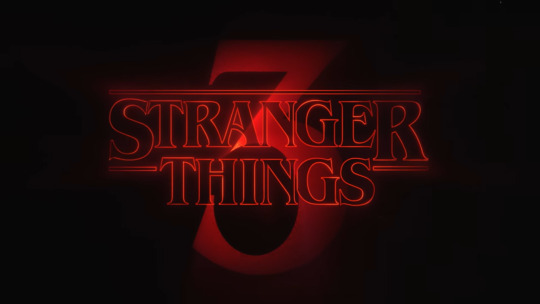
2. STRANGER THINGS (SEASON 3)
Writer-director duo the Duffer Brothers’ ultra-nostalgic 80s-set coming-of-age sci-fi horror series remains the undisputed jewel in Netflix’s long-form crown with this consistently top-drawer third season expertly maintaining the blockbuster-level standards we’ve come to expect. This year the cross-dimensional shenanigans have largely been jettisoned, replaced by a gleefully nasty through-line of icky body horror that would make major influences like David Cronenberg and Stuart Gordon proud, as perennial teenage bad boy Billy Hargrove (the fantastically menacing Dacre Montgomery) becomes the leader of an army of psychic slaves under the control of the Upside Down’s monstrous Mind Flayer. The kids are all brilliant as always, Winona Ryder and David Harbour really get to build on their strong-yet-spiky chemistry, and the show is almost effortlessly stolen by Joe Keery as one-time golden boy Steve Harrington and series-newcomer Maya Hawke as his nerdy new foil Robin Buckley, who were very nearly the cutest couple on TV in 2019. Another gold standard season for a true gold standard show.


1. GOOD OMENS
Sadly, legendary author Terry Pratchett died before he could see the adaptation of one of his most beloved novels (and one of my all-time literary favourites too) see the light of day, but at least his co-author Neil Gaiman was around to bring it to fruition with the aid of seasoned TV director David Mckinnon (Jekyll, Doctor Who, Sherlock), and the end result sure did him proud, perfectly capturing the deeply satirical voice and winningly anarchic, gleefully offbeat and gently subversive humour of the original novel. David Tennant and Michael Sheen could both have been born to play Crowley and Aziraphale, the angel and demon nominally charged with watching over the young Antichrist in preparation for his role in the End Times, even though they would both much rather the world just went on quite happily the way it is, thanks very much. This is about as perfect an adaptation as you can get, the six hour-long episodes giving the surprisingly complex story time to breathe and grow organically, and the result is the most fun I spent in front of my TV this year.

#best TV 2019#watchmen#the boys#preacher#the witcher#carnival row#love death + robots#love death & robots#the dark crystal age of resistance#The Umbrella Academy#stranger things 3#good omens
294 notes
·
View notes